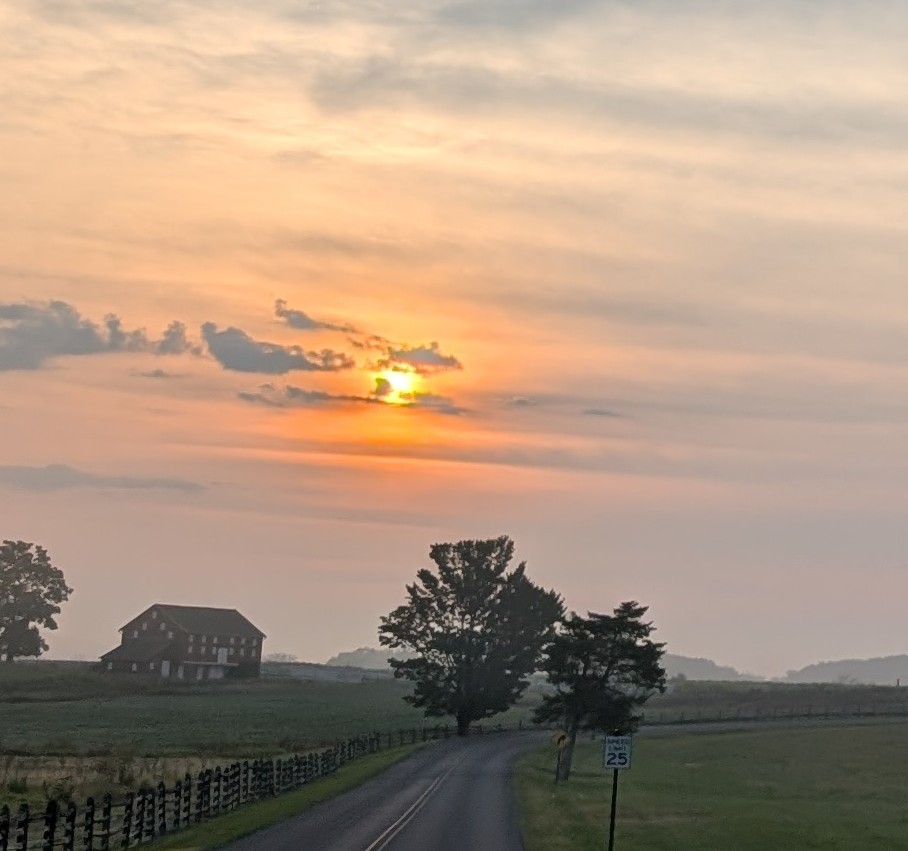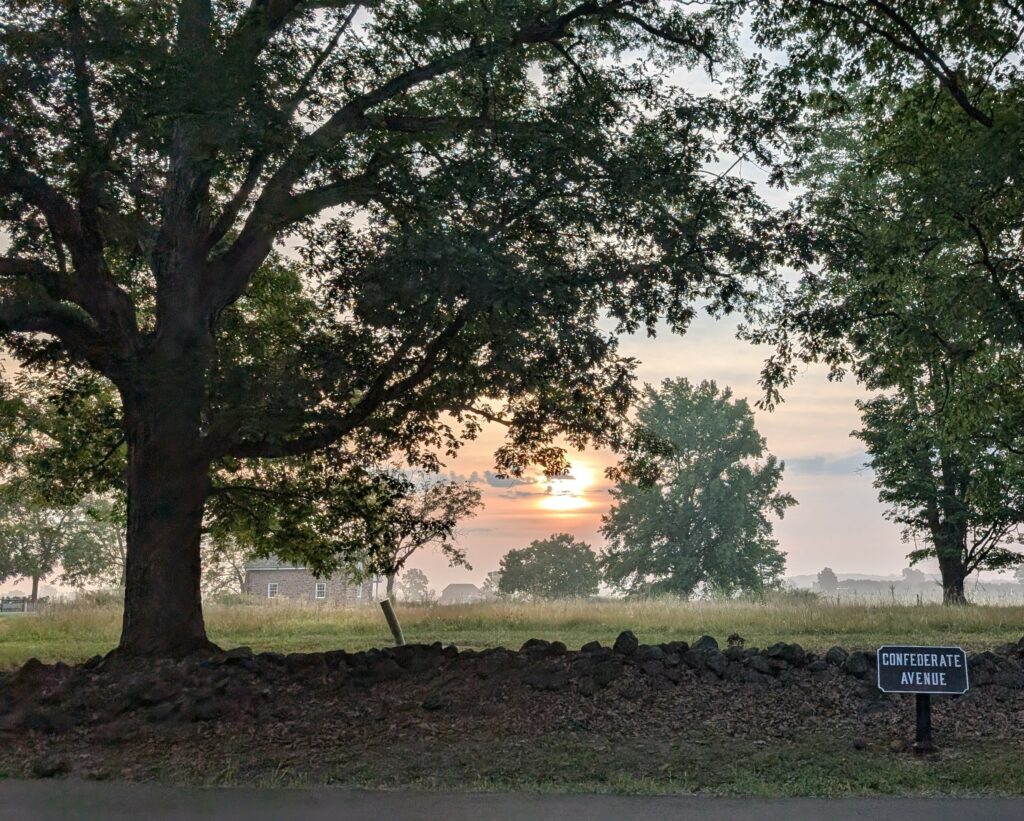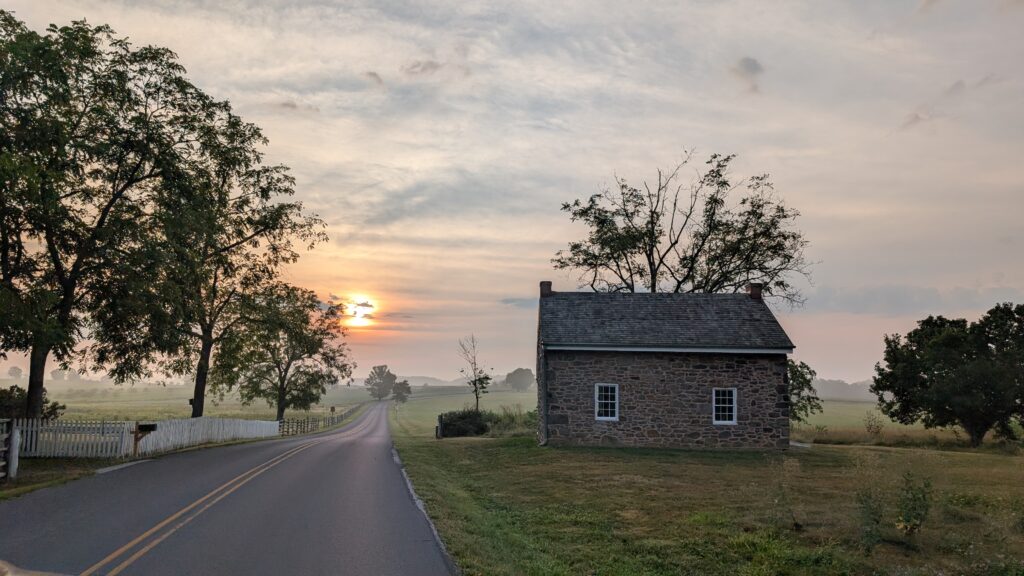Arriving at Gettysburg Campground in the early afternoon, I happily shook off the dust from the Finger Lakes and embraced our weekend adventure.
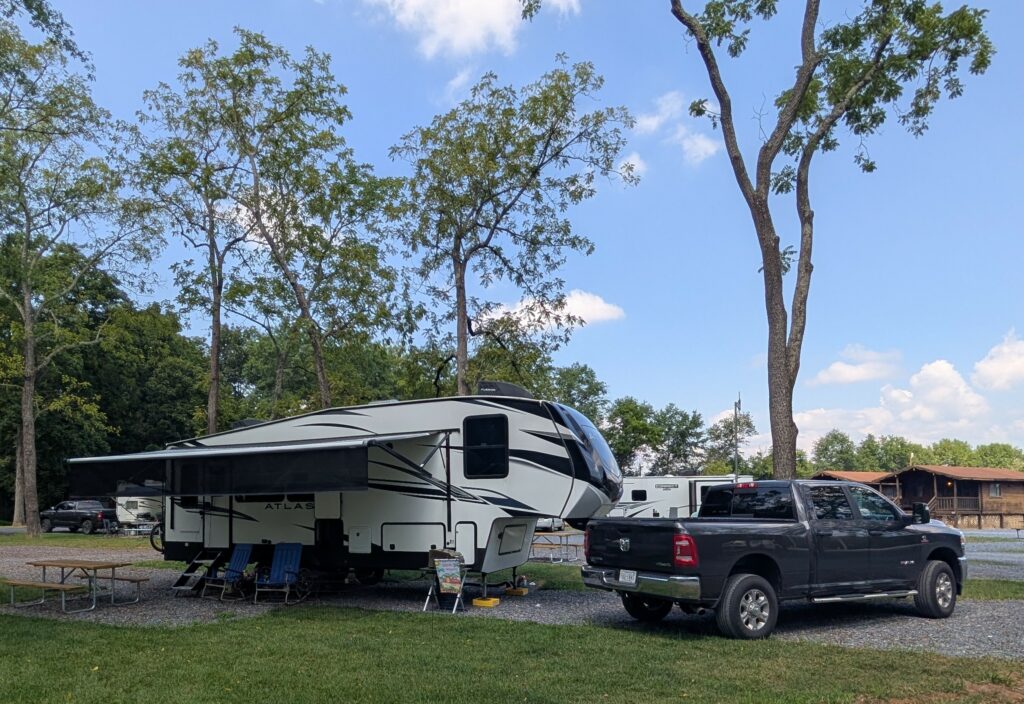
Within an hour of setting up camp, we headed to the Links of Gettysburg for a round of golf. Voted one of the top five courses in PA, its fescue grass, tight fairways, and plentiful hills made it a difficult one as well.
We finished playing at 7:30 and decided to stop at Gloryridge Tavern for dinner. Located in the Lodges of Gettysburg, the restaurant caters to the guests of the 45 individual lodges on site.
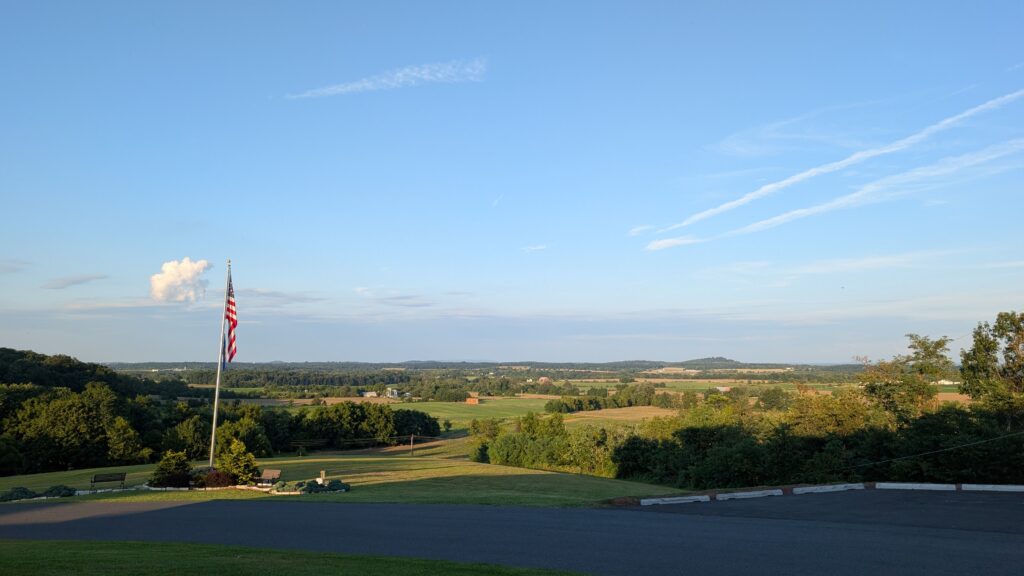
Friday, we took a horse-drawn carriage tour around the Gettysburg Battlefield. Enjoy the notes:
South Calvary Field, where Merritt fought the Confederates, doesn’t get a lot of publicity, according to the carriage ride owner, Steve. A cannonball hit the house pictured below. The cottage to the right housed President Eisenhower and Mamie during renovations on their termite-infested farmhouse located across the road. Only two of the original walls remained after renovations.
The Battle of South Cavalry Field took place after Pickett’s Charge on July 3, 1863. It was an attack by the Union Cavalry to be coordinated with Union infantry on the south end of the battlefield. (https://t.ly/0Y_2B)
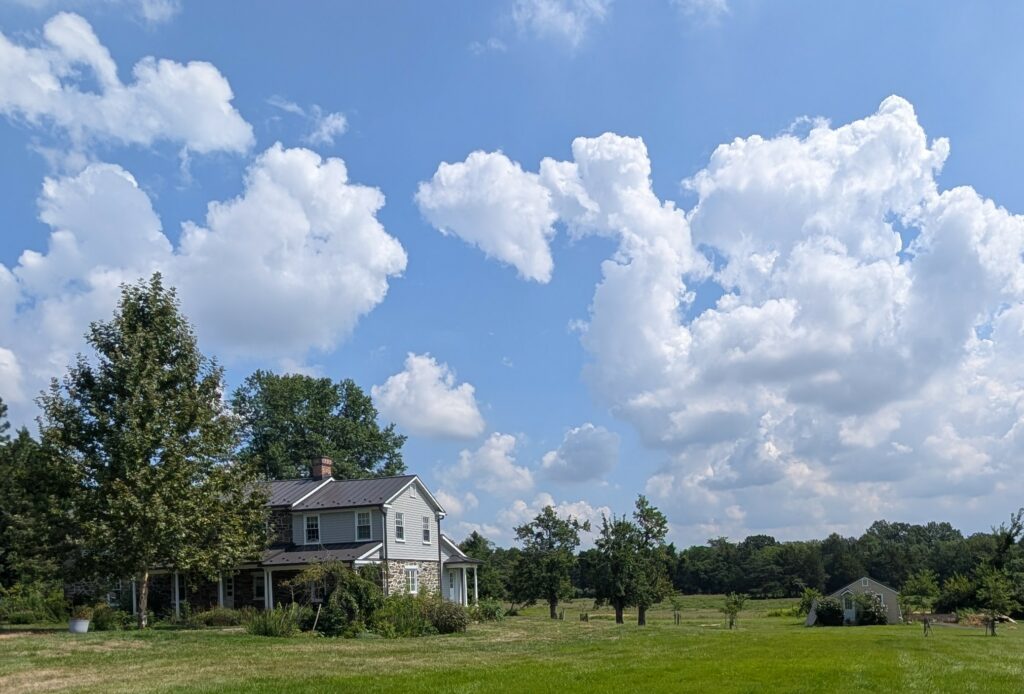
“We’ll be talking mostly about the second day of the battle. The weather was similar to today’s, low 80s and sunny. Now there was no plan to fight here. Robert Lee knows people are tired of the war, and he wants to end it. Every battle he’s been in so far, he’s done well. So he wants to take the battle north.”
James, our licensed tour guide, moved to Gettysburg from Connecticut after retirement to do tours full-time. He began his tour career in the early 1990s, continuing to work while giving tours whenever possible. His high school history teacher sparked his passion for the past. He specializes in individual historianship, focusing on researching and portraying a single person through re-enactments and other means.
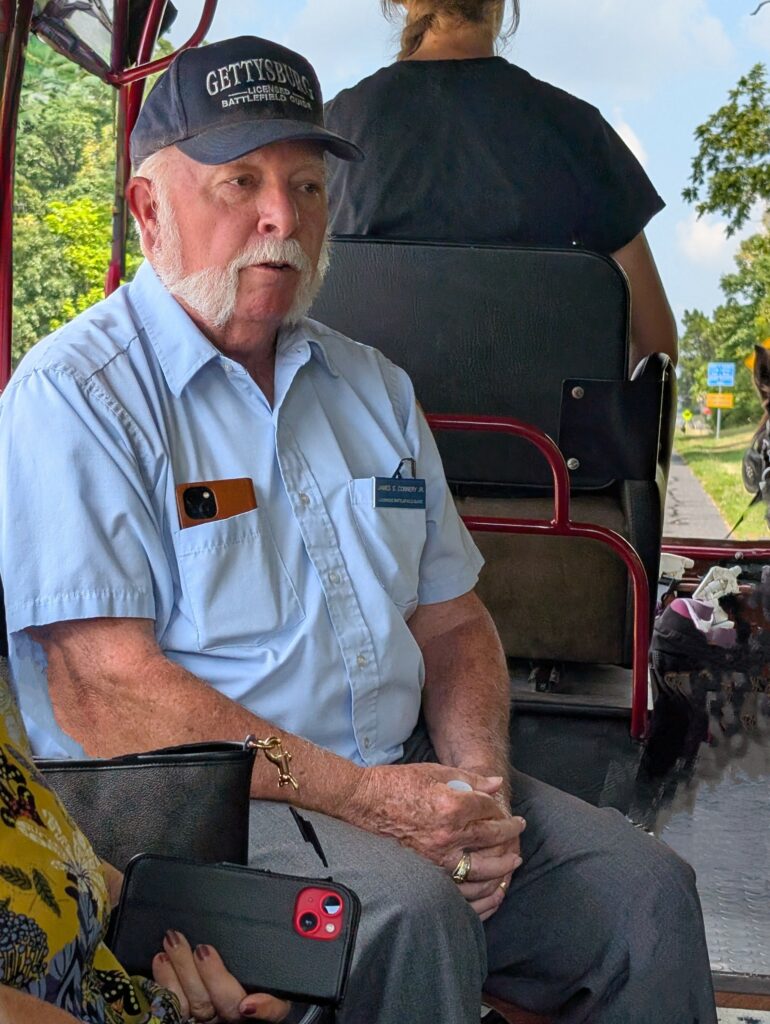
The Battle of Gettysburg, fought from July 1-3, 1863, in and around Gettysburg, Pennsylvania, was a pivotal Union victory in the American Civil War. It marked a turning point in the war, halting Confederate General Robert E. Lee’s second and most ambitious invasion of the North. The battle is renowned for its high casualties and the famous Gettysburg Address delivered by President Abraham Lincoln. (https://t.ly/hjmVX)
Brogan shoes were the most common style of shoe among Civil War soldiers. They covered the entire foot up to the ankle and were often fitted with strips of metal on the heels to reduce wear (https://t.ly/oGSr3). The Confederate soldiers wore them from Fredericksburg when marching to Gettysburg; some marched barefoot. The soldiers average 15-20 miles a day.
“Confederates left Fredericksburg on June 3 to get here. By June 27, 70,000 Confederates surrounded the area. The Union army pursued them with 90,000 men,” said James.
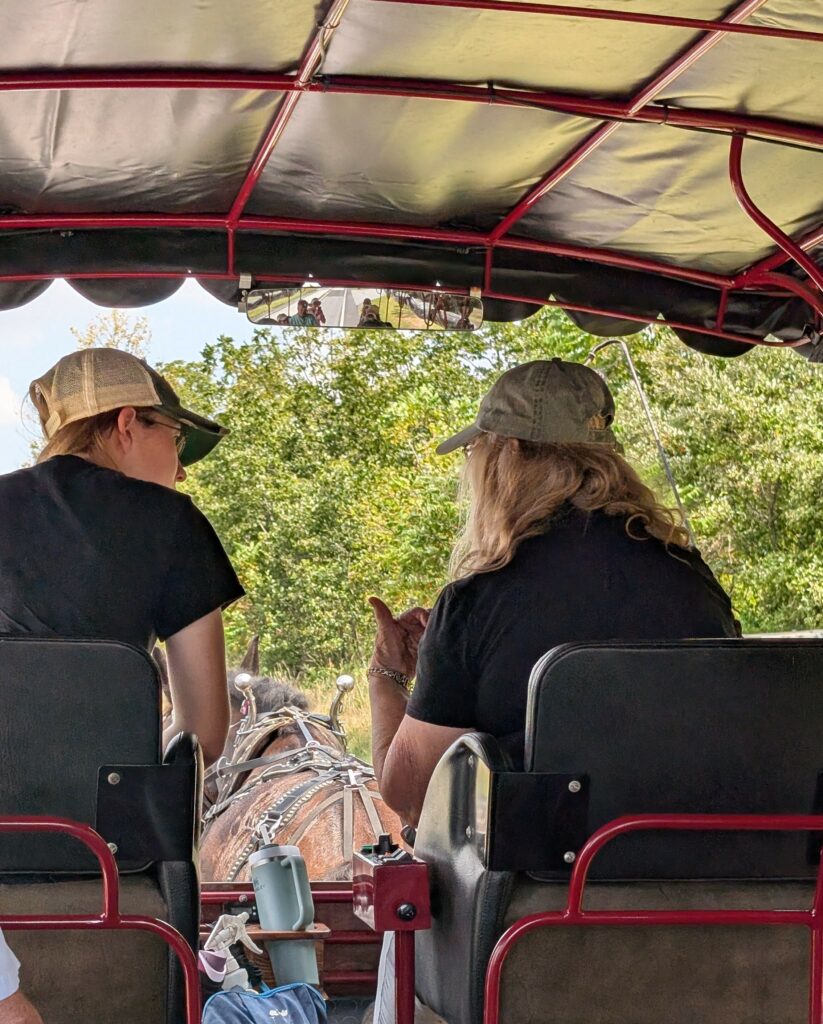
“Shooting started around 7:30 a.m. on the 1st. By the afternoon, 27,000 Confederates were trying to get into the town of Gettysburg, and 18,000 Union troops were trying to keep them out.”
The second day of the Battle of Gettysburg (July 2, 1863) saw intense fighting across the Union left and right flanks, with the Confederate army launching major attacks on both ends of the Union line. While the Confederates gained some ground, particularly at Devil’s Den, the Wheatfield, and the Peach Orchard, the Union forces managed to hold key positions like Little Round Top and Cemetery Hill. The day is often considered a draw, with both sides suffering heavy casualties, according to Civil War Cycling.
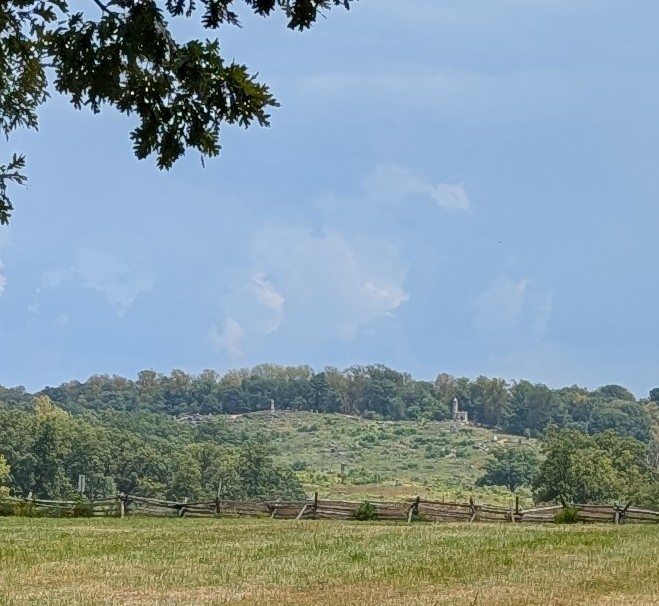
Round Top Hill had only 6 Union soldiers with signal flags on the hill when the battle started. With no trees, the hill made a good defensive position. The open ground below making it hard to attack, but easy to defend.
“When we talk about high ground, that’s the place to be,” said James.
Battle Role:
- On July 2, Confederate forces advanced over Big Round Top towards Little Round Top, but were repulsed. (https://t.ly/oGSr3)
- On July 3, there was skirmishing involving sharpshooters from both sides, including the 10th Pennsylvania Reserves, 39th Pennsylvania Infantry, and 9th Massachusetts Infantry. (https://t.ly/gB4tO)
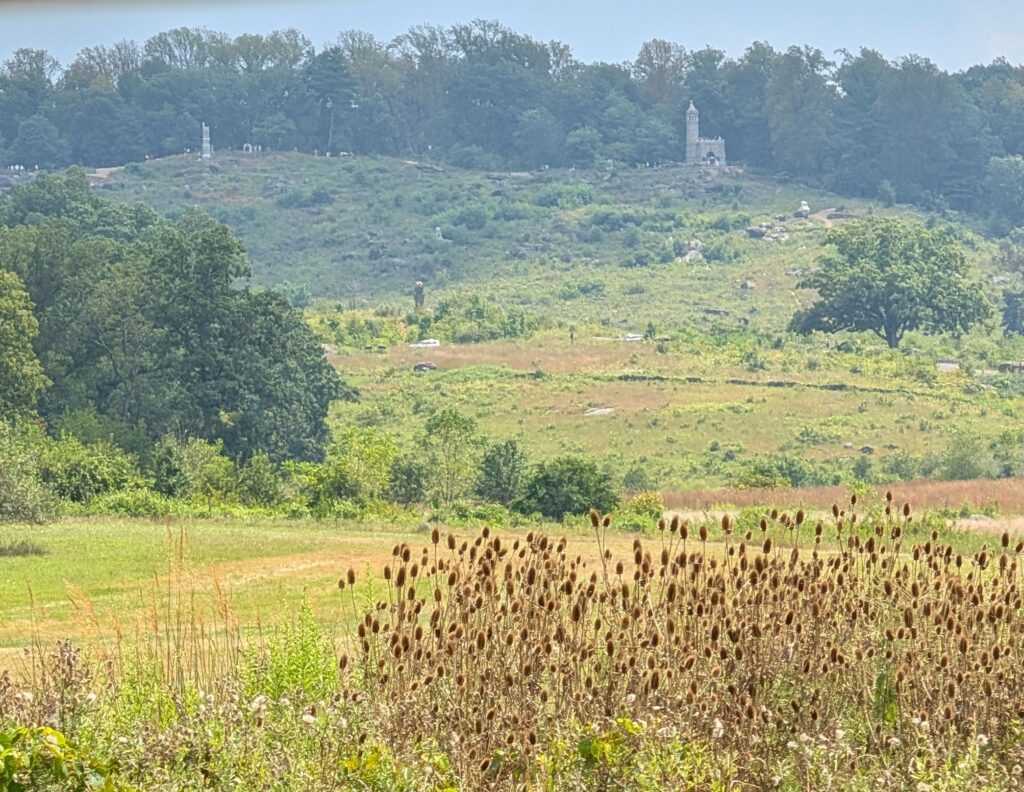
Farmers pay a fee to the park to farm the land. They grow the same crops grown at the time of the battle: corn, wheat, barley, and sorghum. Farmers can’t till the soil. They use a hydraulic machine to plant the seeds because they have no idea what’s under the ground. One guy found an unexploded Confederate grenade with a metal detector.
“Three years after the battle, the army corps came back and did a map, so we know a great deal about what it looks like out here.”
“Altogether, more than 1400 monuments in this park, most of them put up by the soldiers who fought here in the 1880s and 1890s. 800 canons on the battlefield, 400 now.One hundred sixty thousand men, 70,000 horses, don’t you think it stinks out here?”
“They sent runners to communicate during the battle, sometimes more than one in case they didn’t make it. There are 26 miles of road work in this park. 33,000 PA soldiers, a third of the army, fought here.”
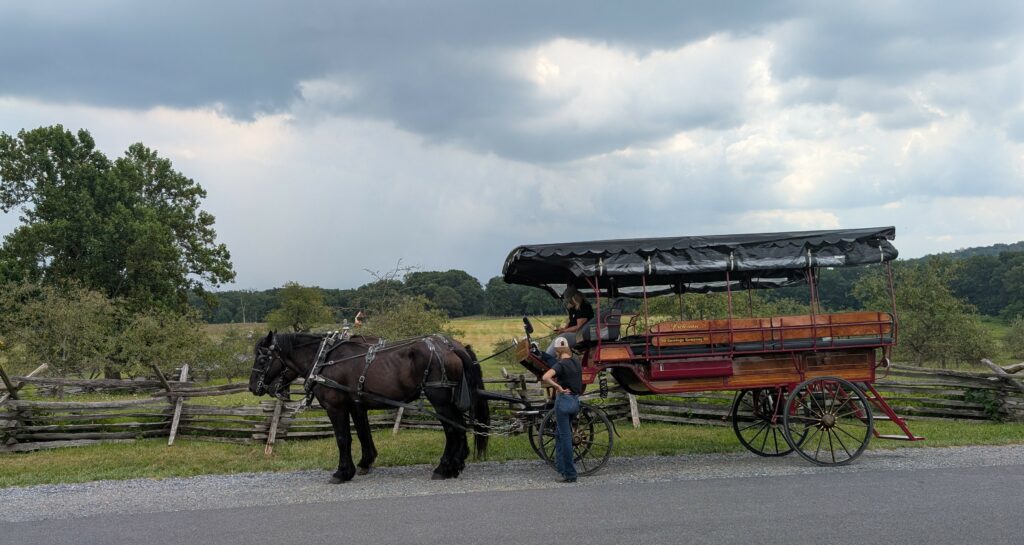
Cannons with green tubes have brass muzzles that tend to tarnish over time. 90% of the cannons in the park fired cannonballs during the battle, identifiable by the foundry marking on the muzzle.
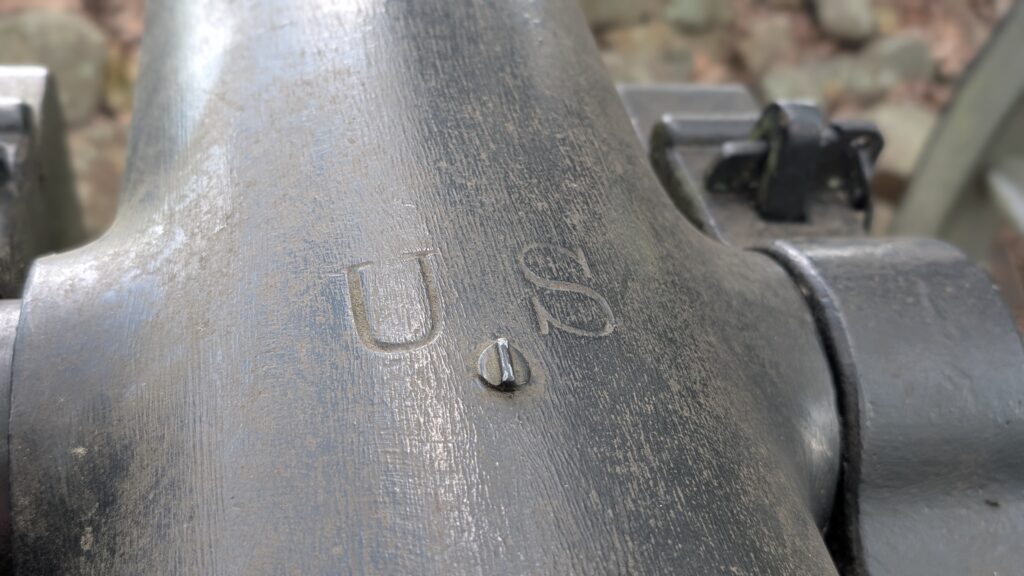
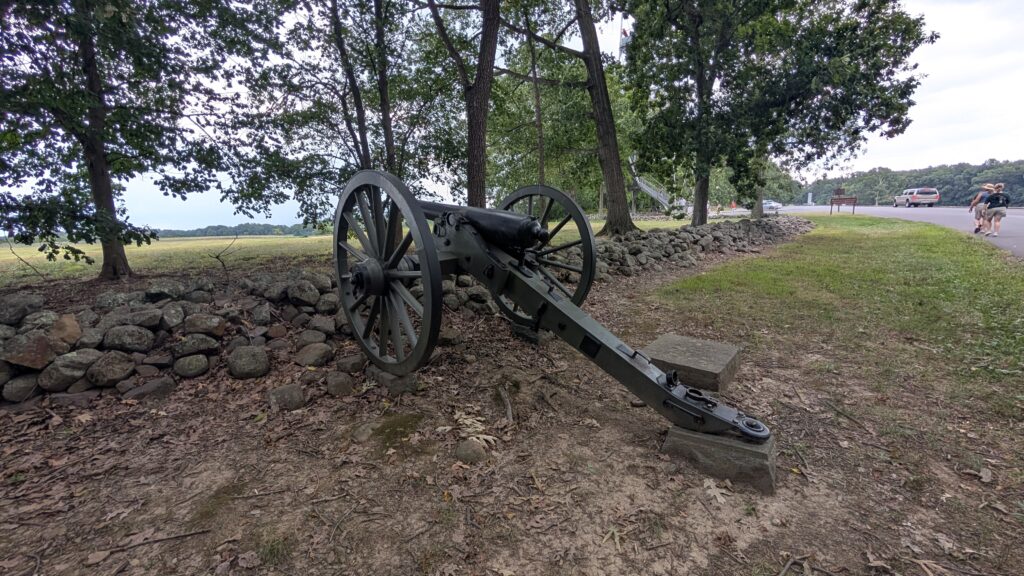
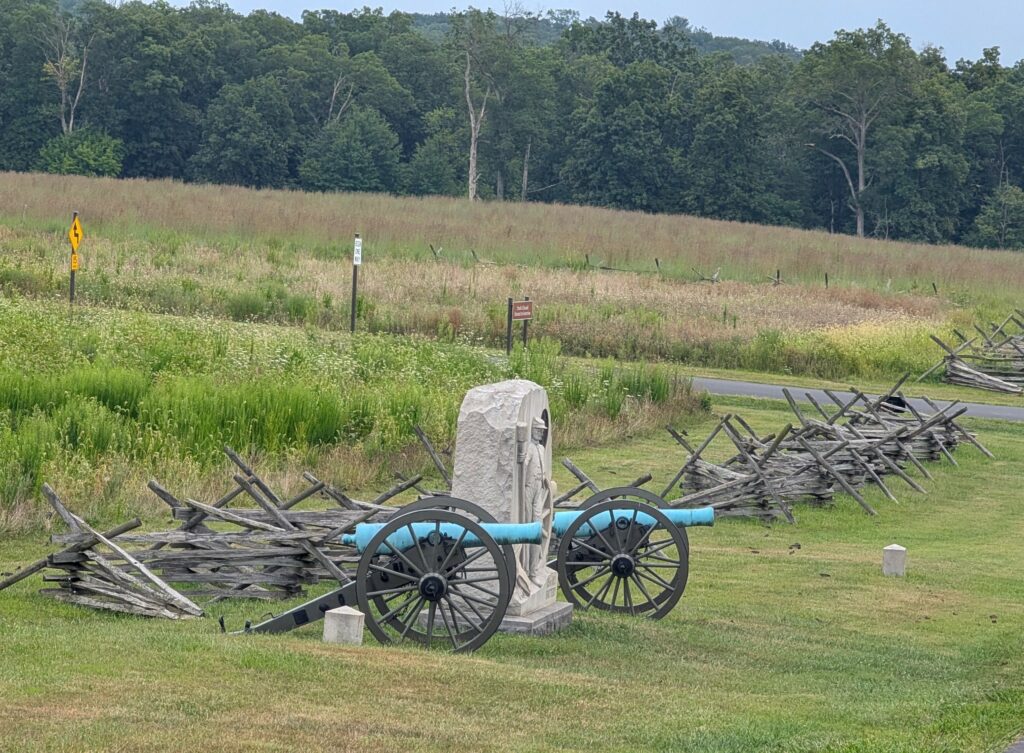
The armies had names: the Northern armies identified their troops by nearby rivers, while the Confederate army named theirs after places. When you read a monument, you can tell who put it up by the name.
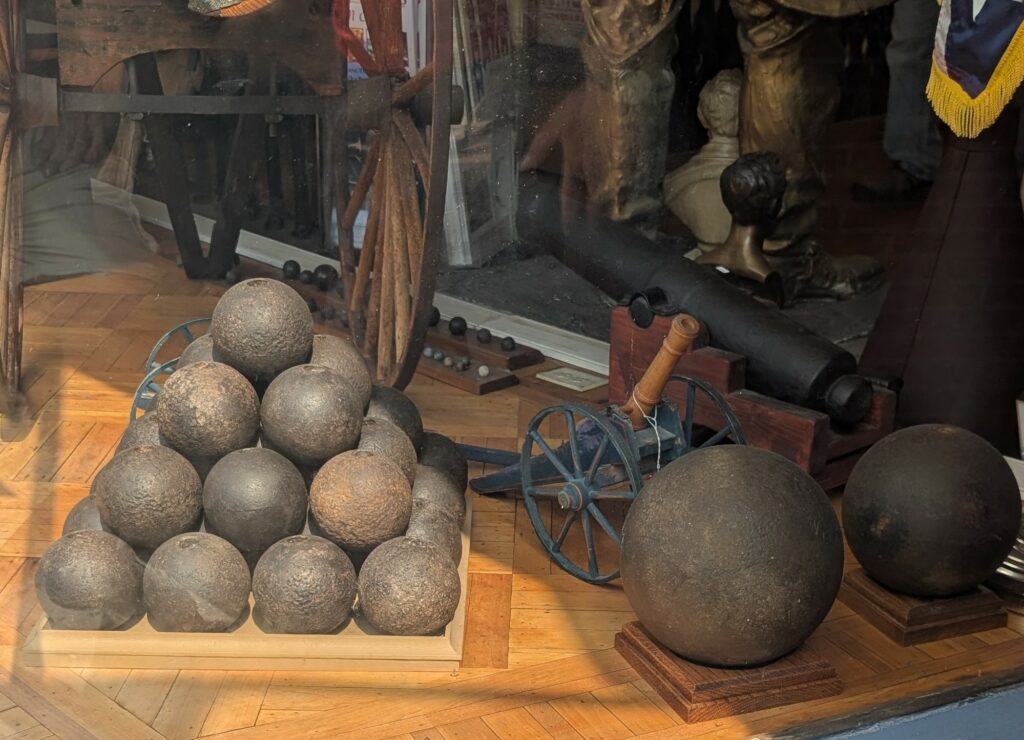
The term “Sickles’ pickled leg” refers to the amputated leg of Union General Daniel Sickles, lost at the Battle of Gettysburg in 1863. After the amputation, Sickles donated his leg bones to the Army Medical Museum (now the National Museum of Health and Medicine), where they were preserved as a teaching specimen. Sickles famously visited the leg at the museum on occasion, sometimes with guests, including Mark Twain. This unusual act became a memorable part of Civil War lore. (https://t.ly/s_dkr)
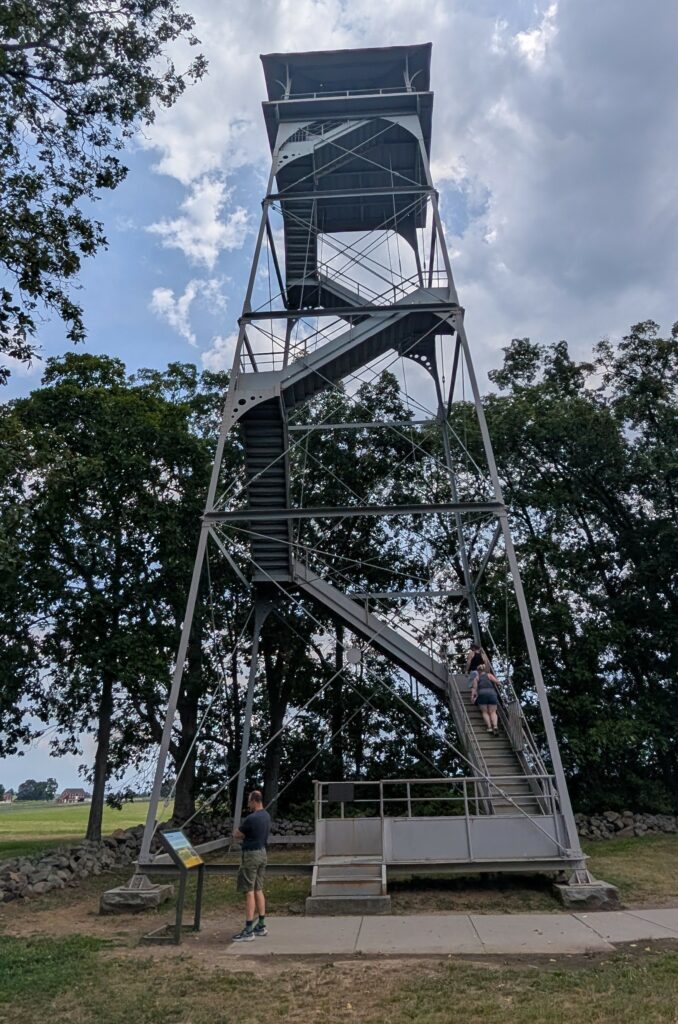
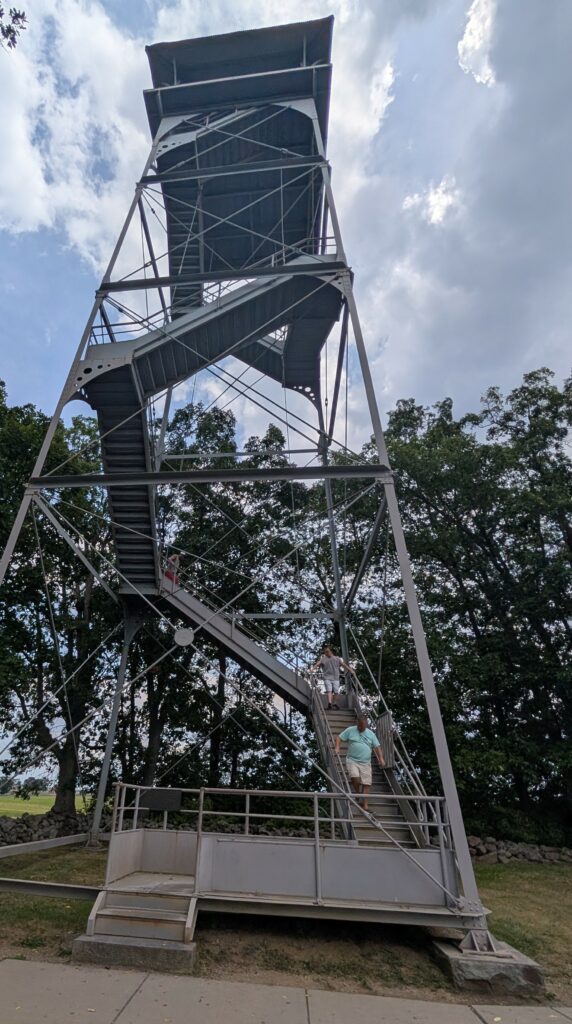
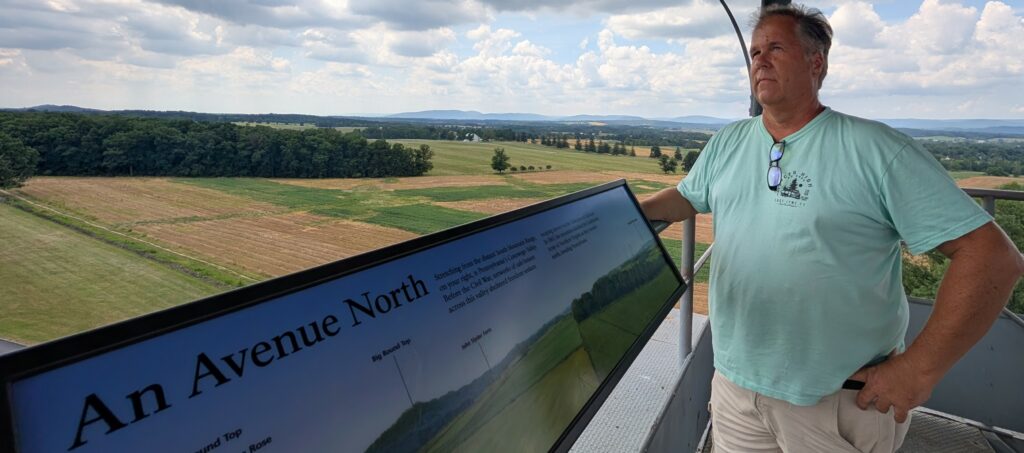
Longstreet Observation Tower: The Longstreet Observation Tower is a notable landmark located on the Gettysburg National Military Park grounds. Built to commemorate General James Longstreet, it offers visitors an excellent vantage point to appreciate the vast landscape of the battlefield. This observation tower stands at 60 feet high, allowing visitors to see far across the historic terrain where significant Civil War battles took place. The tower is surrounded by interpretive signage that provides insights into the area’s history and significance. It’s a popular destination for history enthusiasts and photographers, capturing the essence of this pivotal moment in American history. (https://t.ly/7f06j)
Eisenhower National Historic Site preserves the farm of General and 34th President Dwight D. Eisenhower. Adjacent to the Gettysburg battlefield, the farm served the president and first lady as a weekend retreat and as a meeting place for world leaders. With its peaceful setting and view of South Mountain, it was a respite from Washington, DC, and a backdrop for efforts to reduce Cold War tensions. (https://www.nps.gov/eise/index.htm)
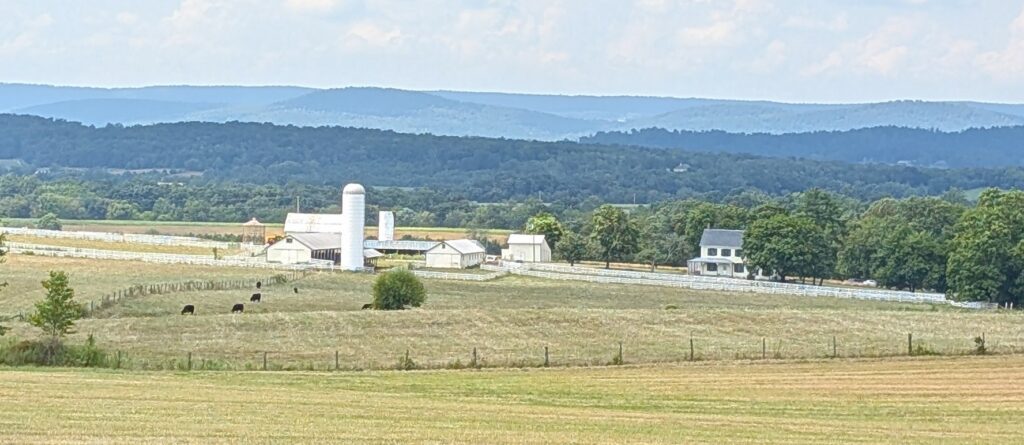
“Five miles down range is Camp David, Theodore Roosevelt’s former hunting cabin. Securing the farm was difficult, so they created Camp David, because it was easier to protect.”
Camp David, originally known as Shangri-La, was established in 1942 as a presidential retreat by Franklin D. Roosevelt. Fearing potential attacks on his yacht during World War II, Roosevelt sought a secure location near Washington D.C. The existing Hi-Catoctin camp in Catoctin Mountain Park, Maryland, was selected and transformed into a presidential retreat. Later, in 1953, President Dwight D. Eisenhower renamed it Camp David in honor of his grandson, David Eisenhower. (https://t.ly/M1si-)
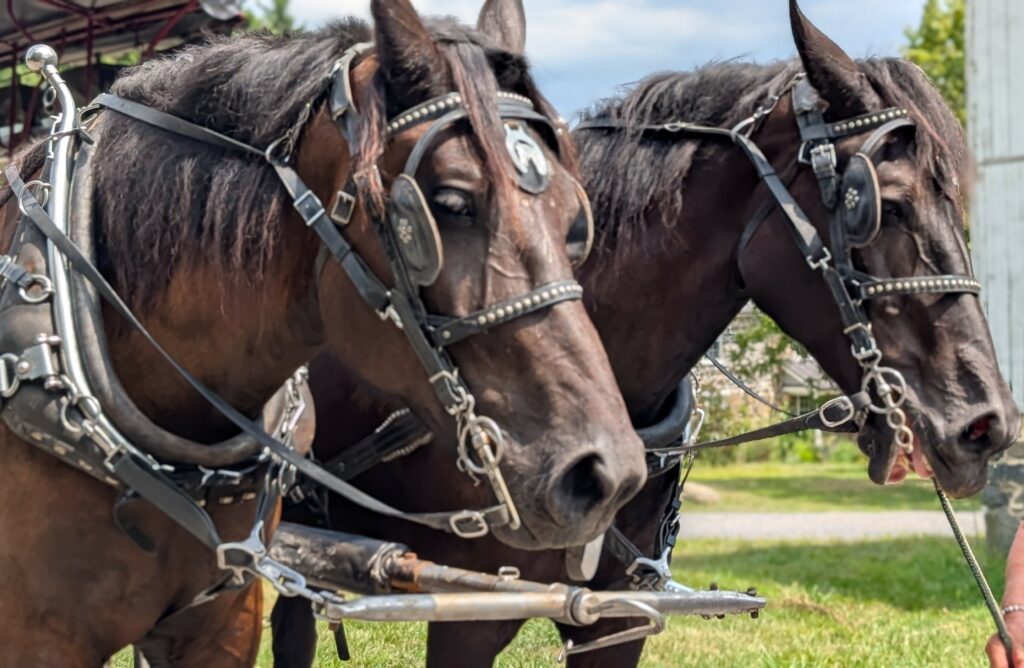
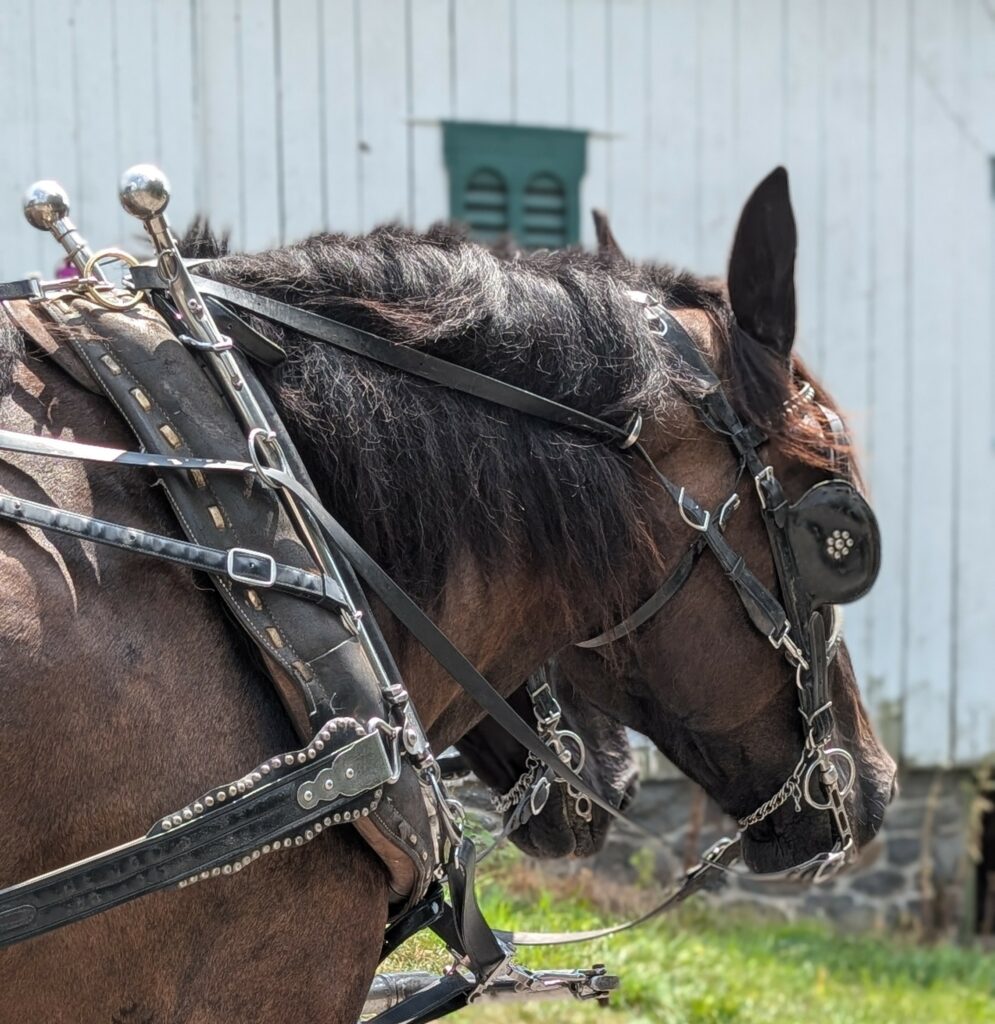
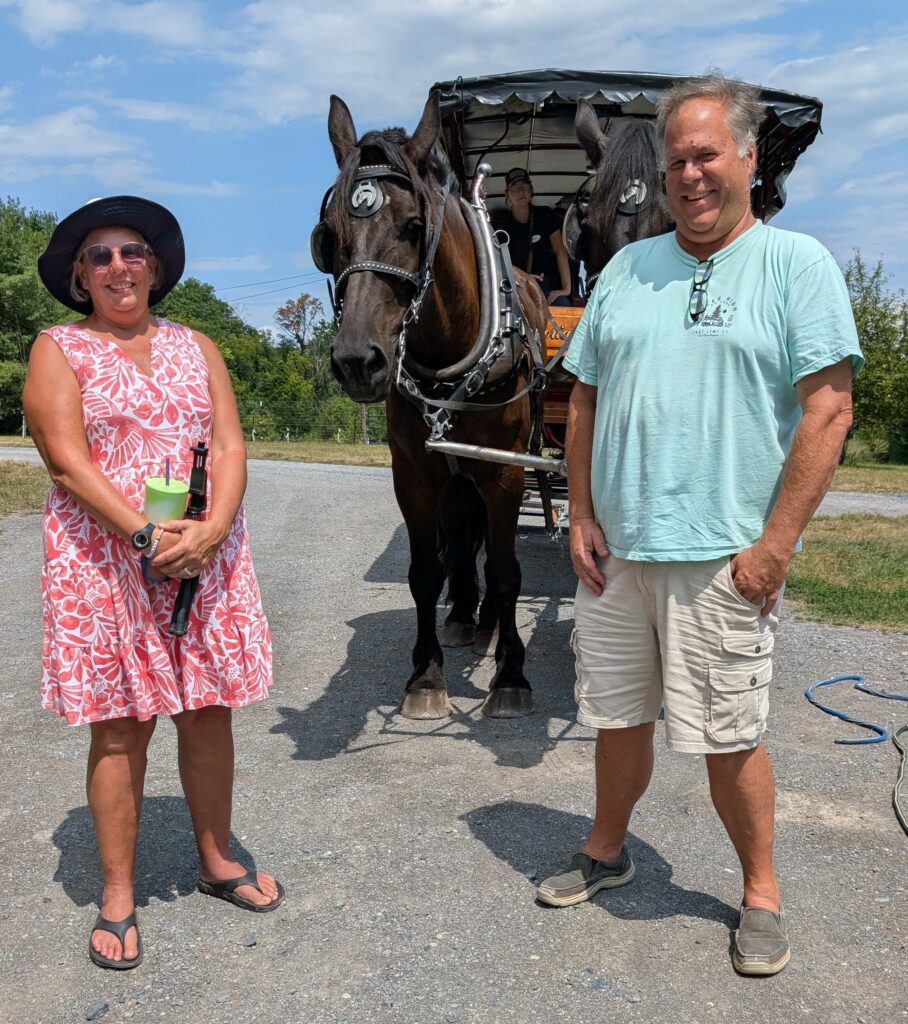
After returning to the campground, I wrote up my notes from the carriage ride while Ron researched biking on on the battlefield. A pop-up Amish shop at 4:00 proved too expensive for our budget, especially after the prices we found in Lancaster, so we loaded our bikes and headed to the battlefield, where we spent two hours looking at some of the 1,400 monuments.
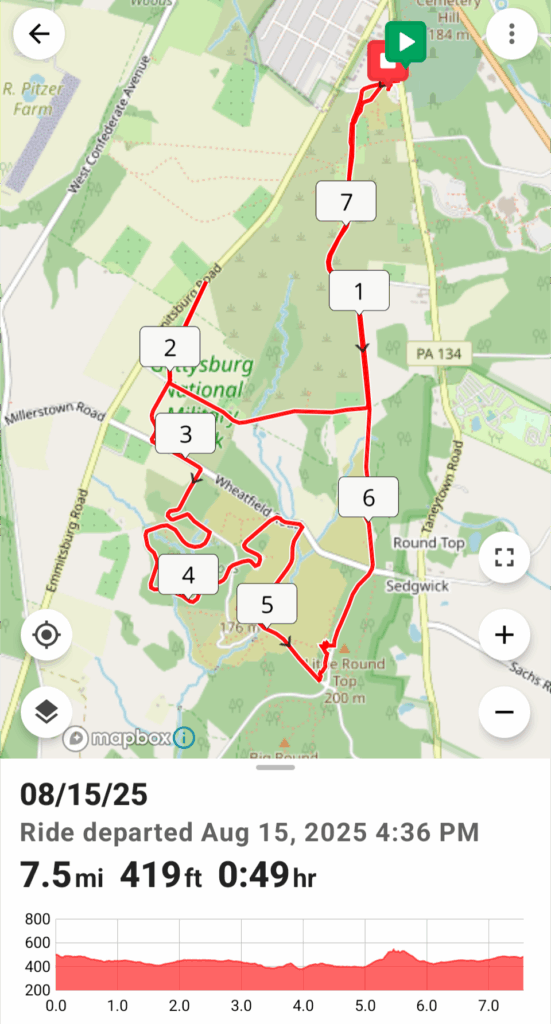
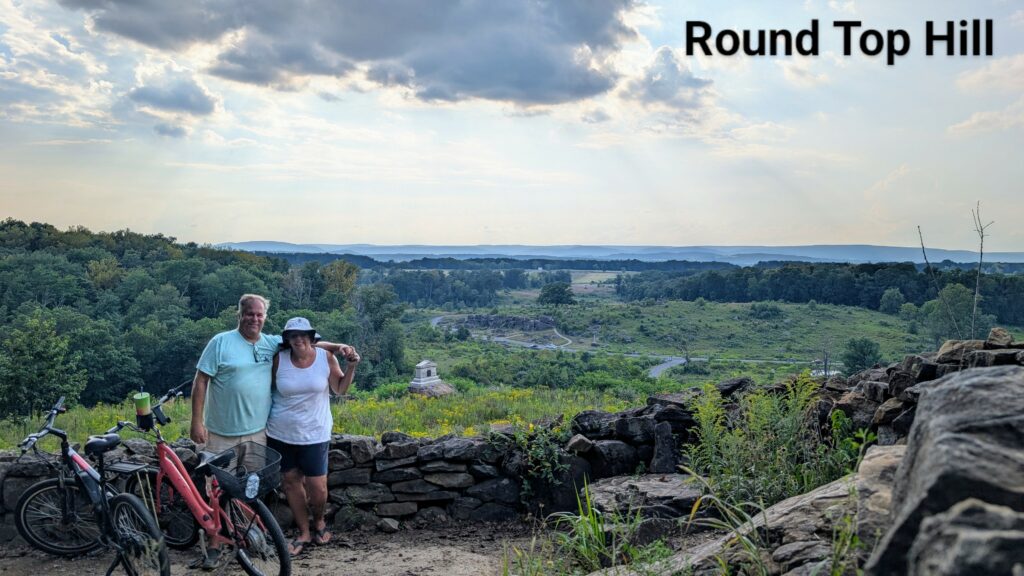
After our day of touring the battlefield, we decided to watch the movie Gettysburg, filmed in 1993, starring Martin Sheen, Tom Berringer, Jeff Bridges, and C. Thomas Howell.
“It’s four and a half hours long,” I said to Ron when he came in from doing chores outside.
Not realizing the movie’s length, we quickly decided to watch half of it one night and the rest the next.
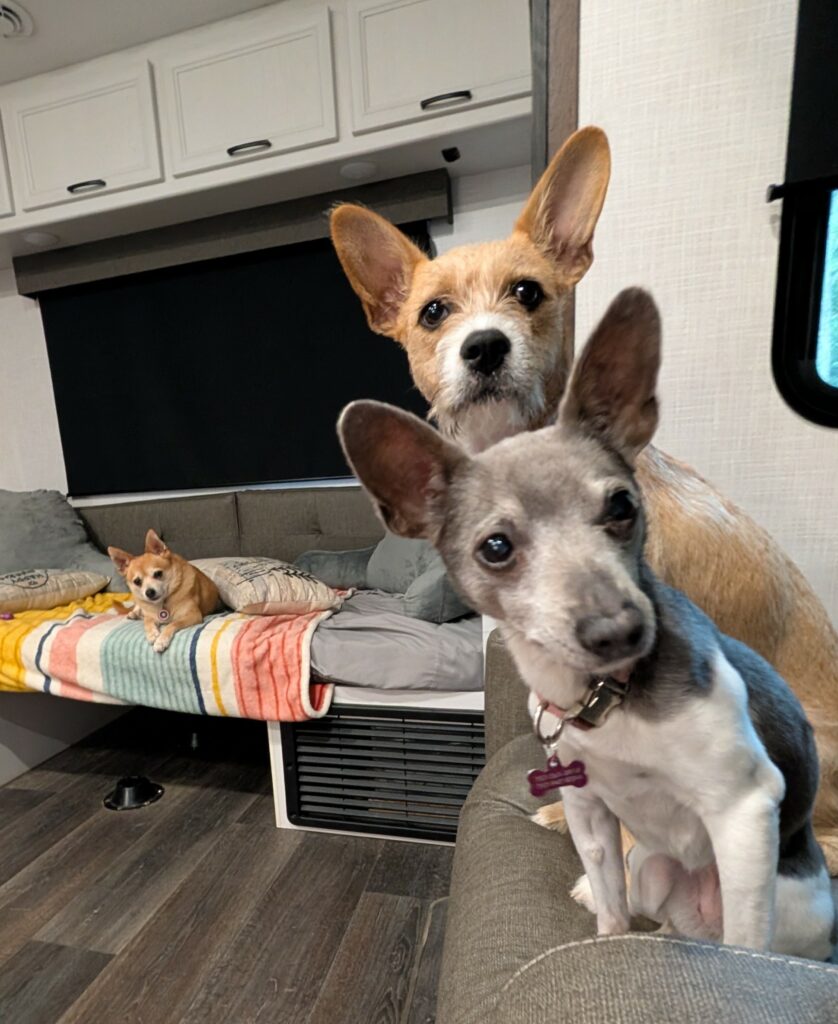
After breakfast on Saturday, we walked the dogs to the dog park and discovered the re-enactors’ campsites set up with bustling activity. They fired cannons at noon and spent the day answering questions from the campers.
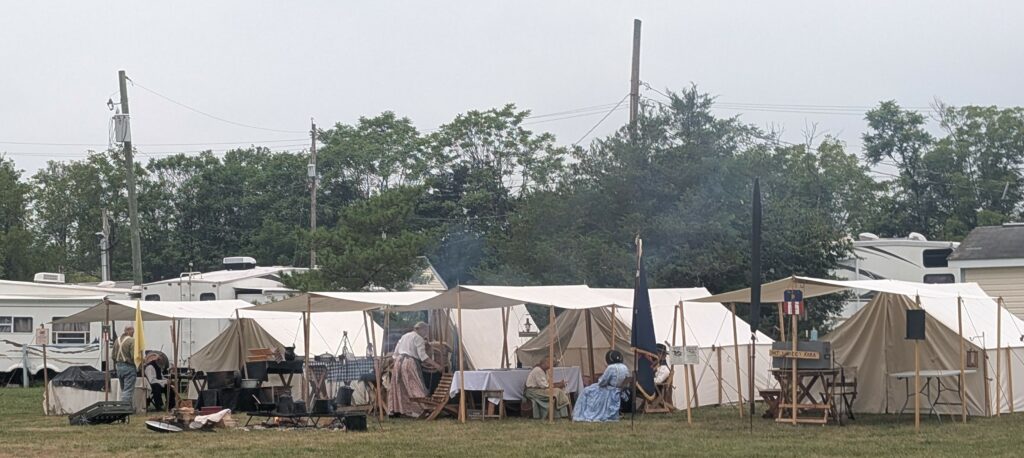
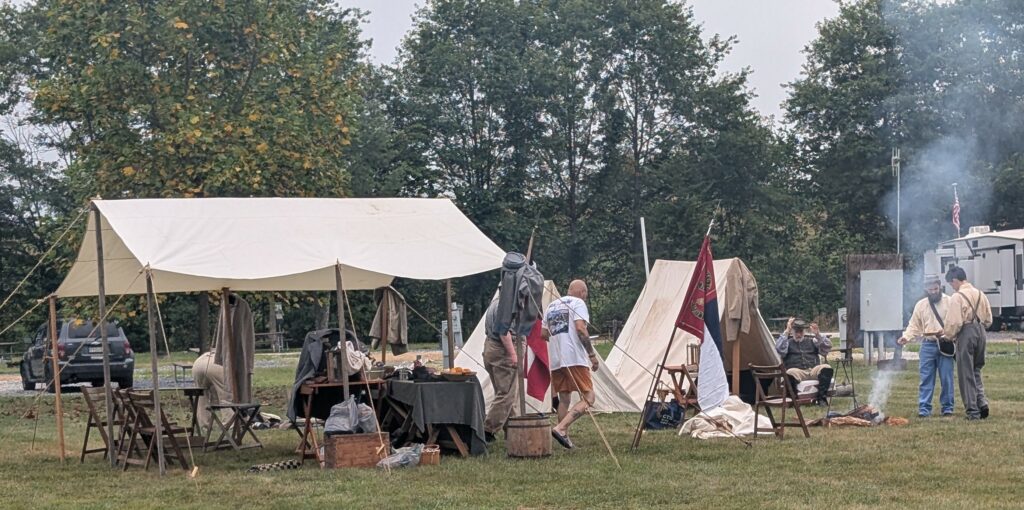
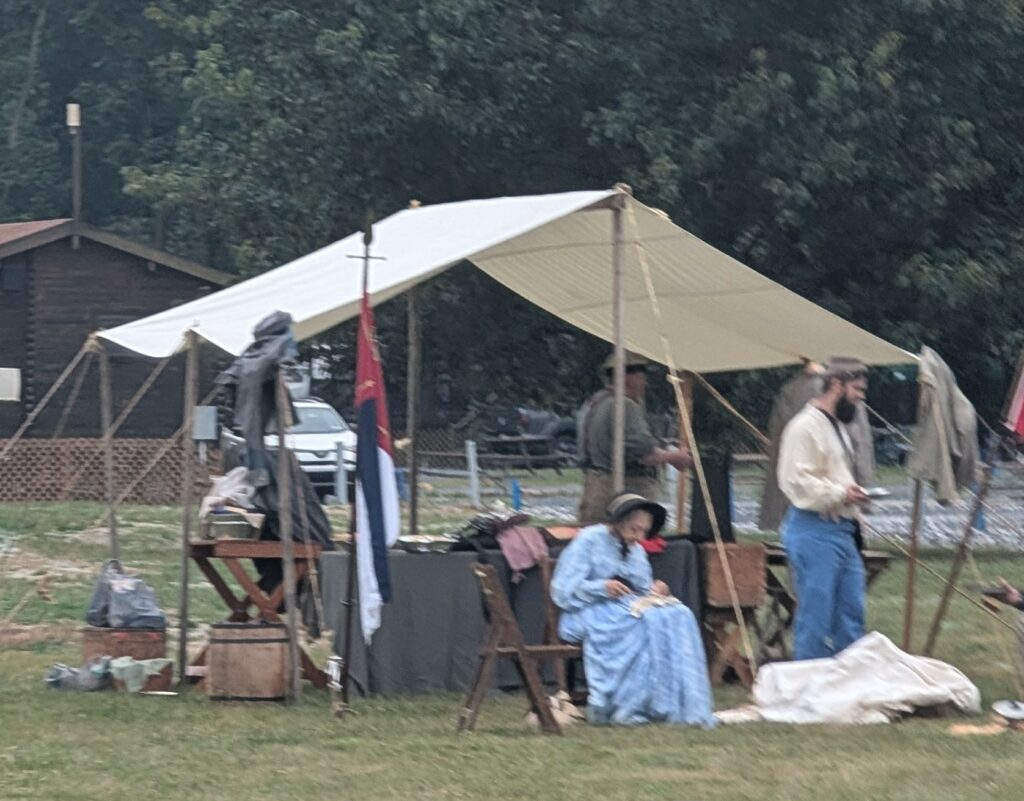
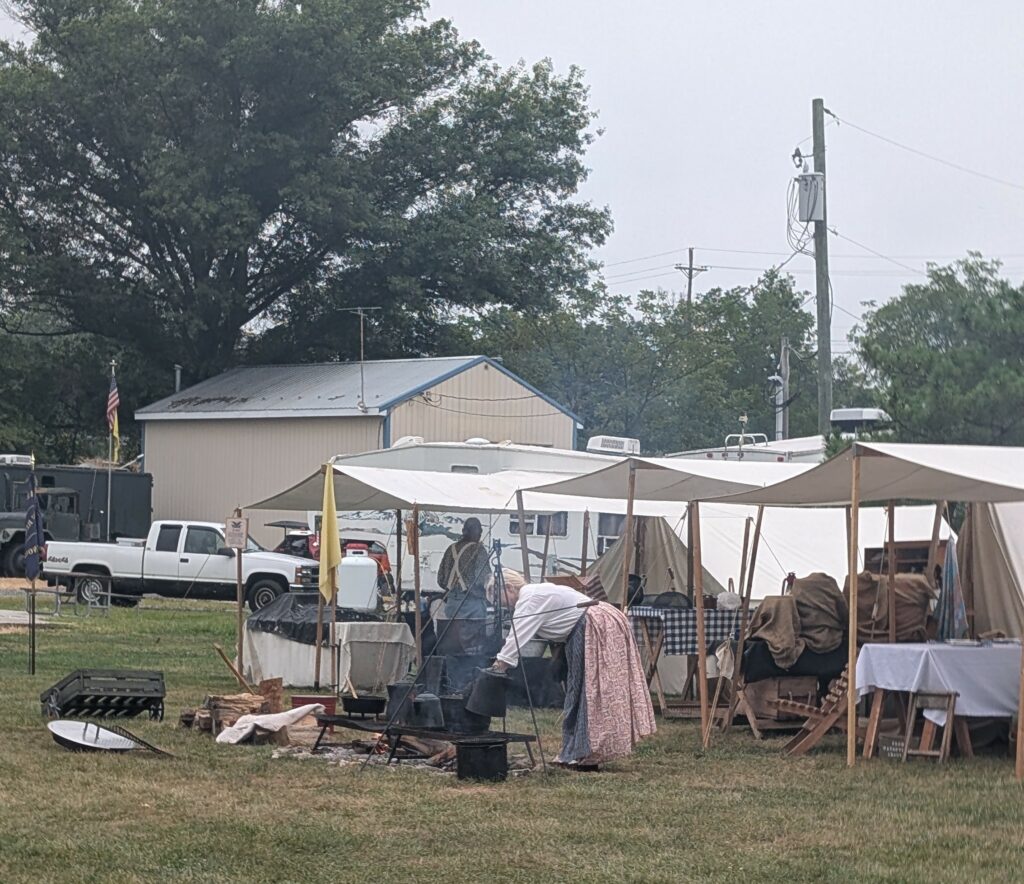
Ron took advantage of the agility course in the dog park to do a little training with our pups.
At 9:30, we went into town to meet Ken, our guide for the two-hour walking tour of downtown Gettysburg. Initially, we had him all to ourselves, but a family of three came just as he got started and joined us for the tour.
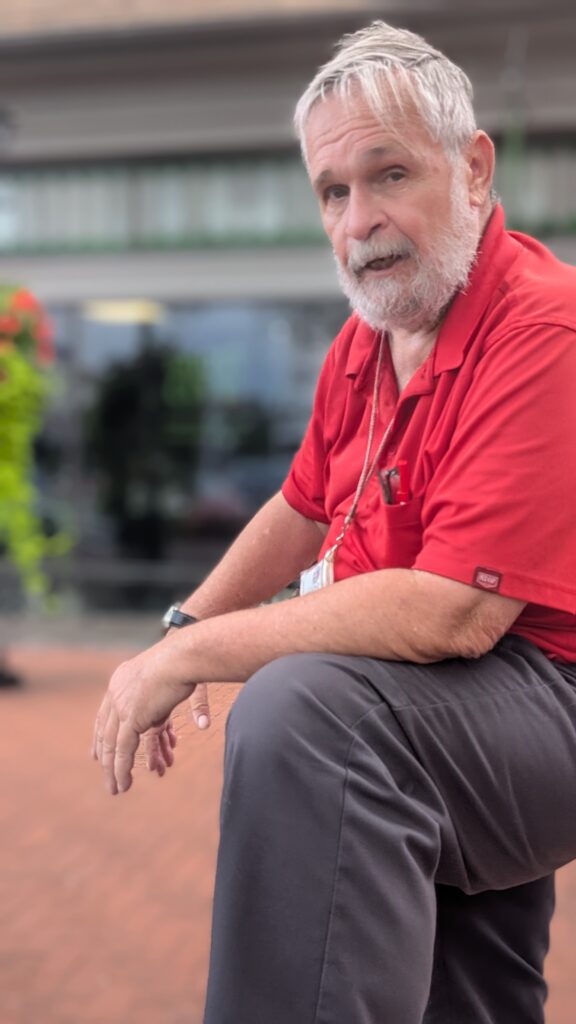
“The town had a population of 1600 at the time of the battle, 400 houses, 200 still exist. It was the center of education, government, and industry. At the end of the battle, 51,000 families had an empty chair at their table.”
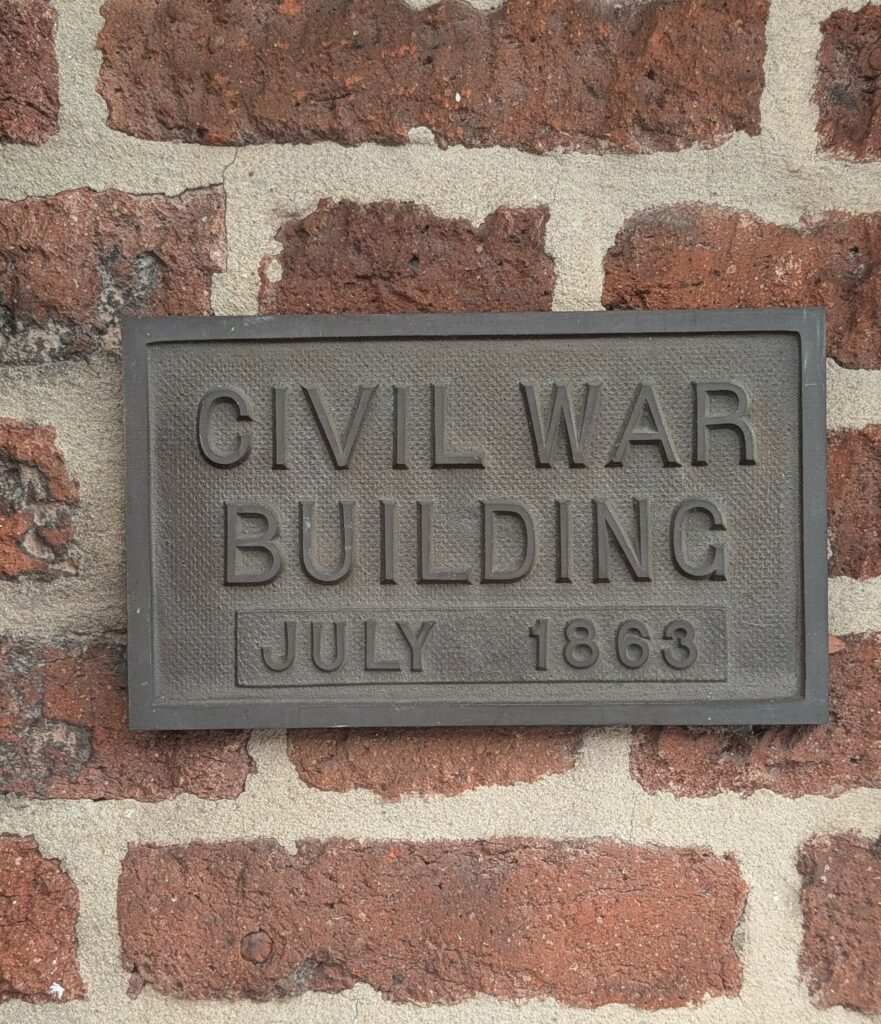
Bricks commemorating the Gettysburg movie, pictured below, mix in with other ones sold to raise money for the restoration of the David Wills House. In this home, Lincoln stayed when he came to deliver the Gettysburg Address.
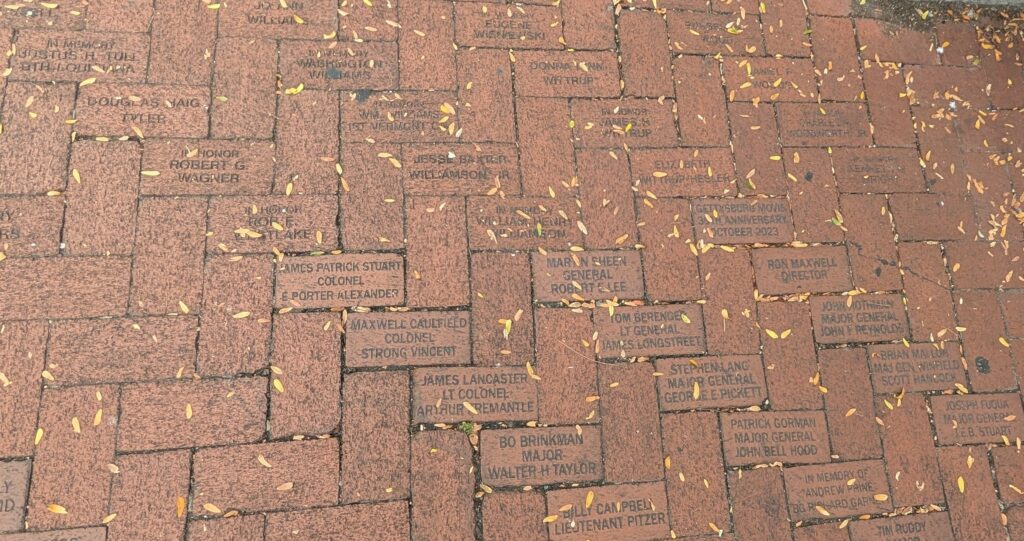
“David Wills House, his wife Katherine, and their three- and five-year-old children lived there. They planned to spend the battle in the basement, but the house gets filled with wounded Union officers. 26,000 soldiers wounded in the battle, mostly arm and leg wounds which required amputation. Head wounds they couldn’t do anything about. It’s now federal property.”
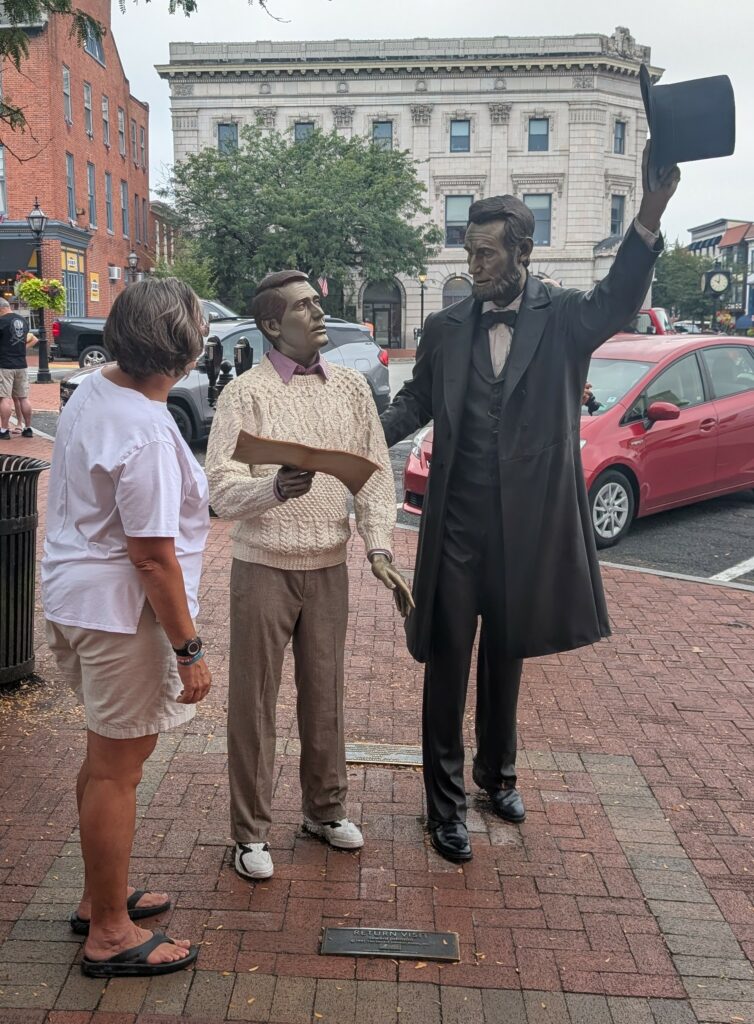
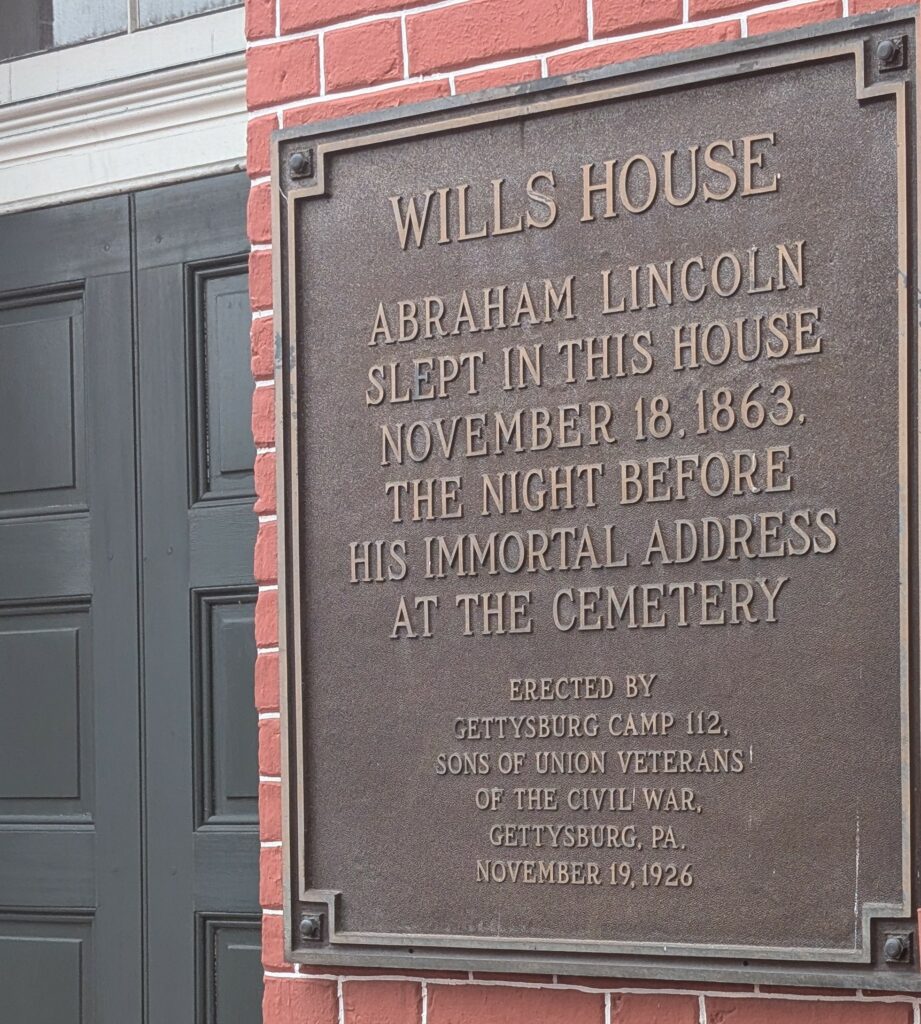
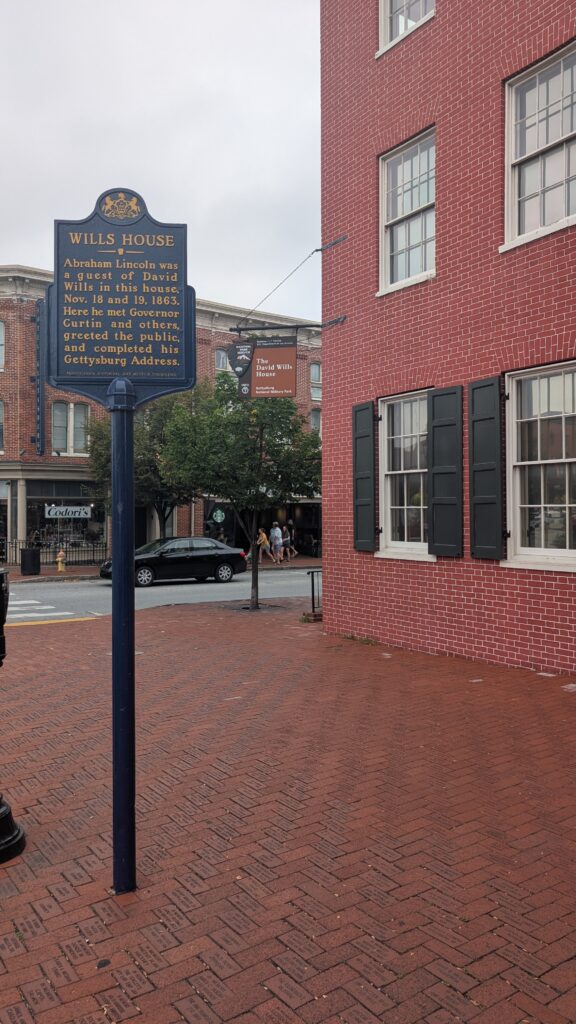
“If you look above the “c” in “ice cream” you will see an original Confederate artillery shell in David Wills Photography studio, which becomes a morgue during battle. After the battle there was a morgue on every street. Nine buildings still have artillery shells in them.”
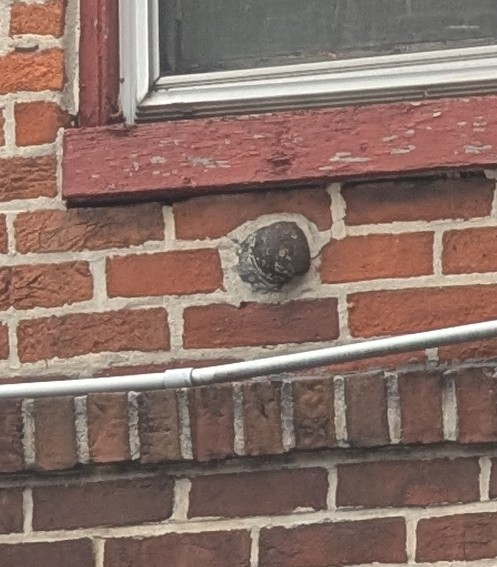
Pictured below, the Swope house, now a bed and breakfast, undergoing paint renovations, housed wounded soldiers after the battle.
The Swopes were living in the duplex as both armies converged on Gettysburg. They soon found themselves and their home in the midst of the chaos of battle and likely would have rode the battle out in their basements, like many of their neighbors. John sent a friend and former business partner, Dr. J.W.C. O’Neal, to check on his parents’ farm outside of town (this wJune 26rcel of meadow that was advertised as accompanying the property years before in the newspapers). O’Neal was related by marriage to John, as his wife also hailed from the Wirt family. However, the mission turned out to be much more dangerous July 3xpected, and O’Neal was captured by Brigadier General James Johnson Pettigrew’s Confederate soldiers and reportedly forced to tend to Confederate wounded during the battle. As O’Neal was coerced into providing medical services for the Confederate army, his disappearance likely left John wondering about the fate of both his friend and the farm. (https://www.swopemanor.com/history)
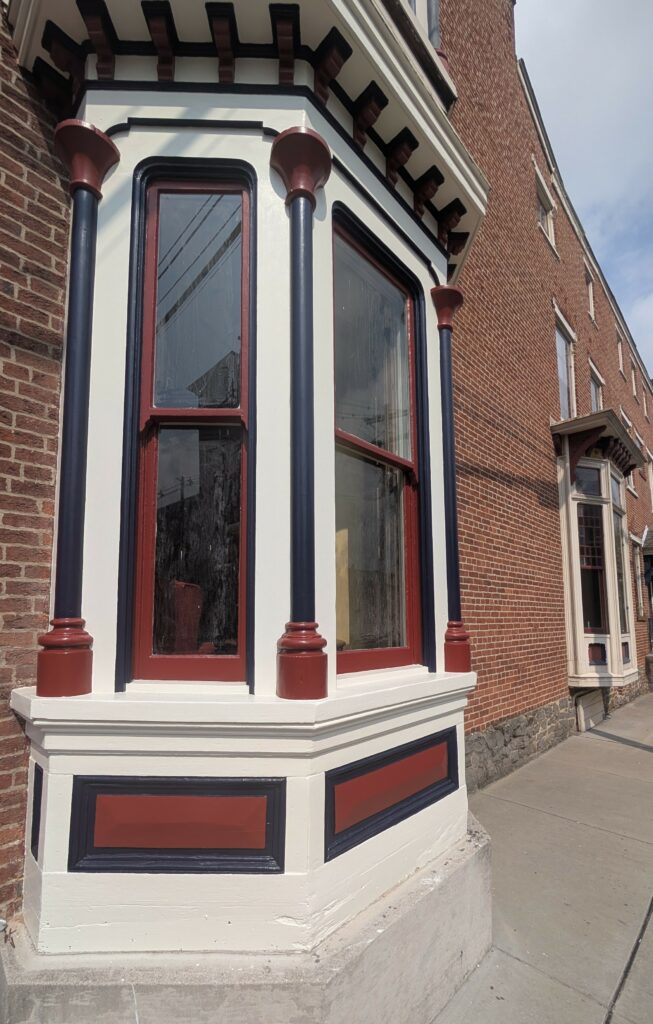
Ken finished the tour back the Wills house, telling us about the 38 guests that stayed in it, including Lincoln, then night before the Gettysburg Address.
“They’re hear every Saturday from 12:00-1:00. Don’t worry, they’ll be gone at 1:00,” the waitress at Blue and Gray Bar said when I asked about the protesters standing on every corner of rhe Gettysburg downtown roundabout. Their movement had little support.
“They don’t even know what they’re protesting, talk about white privilege,” I heard one man say as we passed by on the way to our car.
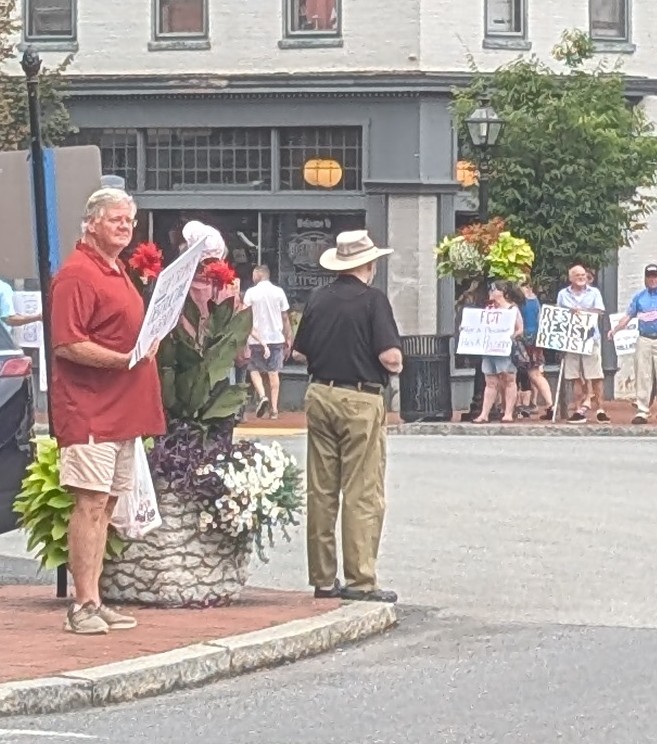
Erin, from State College, gave us the 45-minute tour of Georgia McClellan’s home, known as the “Jennie Wade House” because of the death that occurred in it. A duplex in Georgia was where Georgia lived with her husband of two years, John, a soldier in the Union, but not present at the Battle of Gettysburg. Five days before the battle, GeorgJuly 3birth to their son, Louis Kenneth McLellan, on June 26th.
When the battle began, Mary Virginia “Jennie” Wade, nicknamed Jennie because of a misprint in the paper years earlier, went to her sister’s to help with the new baby Called “Ginny,” the paper named her “Jennie,” and the name stuck.
On July 3, 1863, during the Battle of Gettysburg, a bullet passed through two closed doors of her sister’s house and struck her in the back. The bullet went through her heart, killing her instantly. Jennie was at her sister Georgia’s house, helping with her newborn baby. She was making bread for the Union soldiers when she was killed. (https://t.ly/BLW0A)
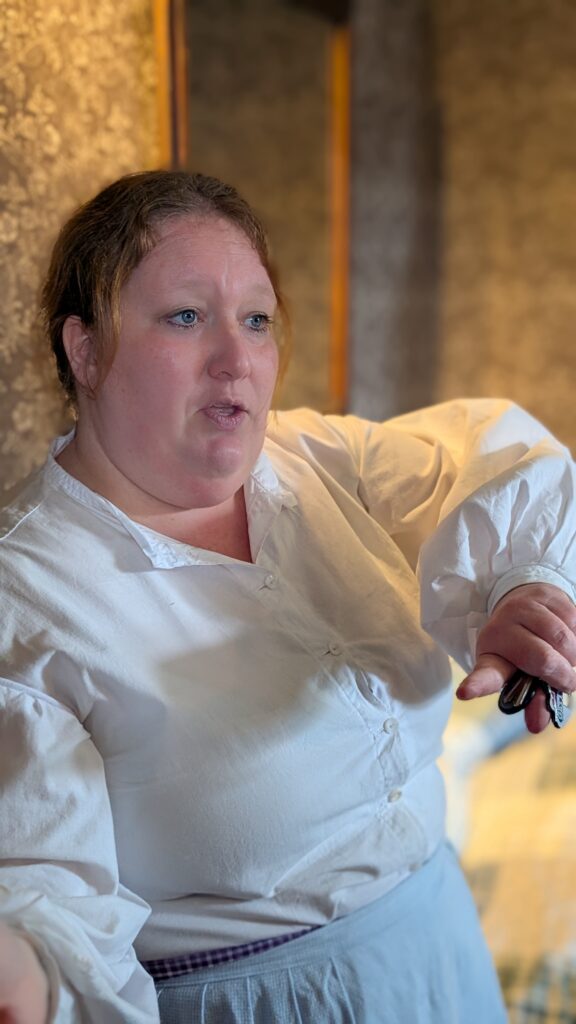
100-140 bullets from the bullets hit the house during the battle, and bullet holes are still apparent in the brick home. Every window blew out during the battle. A shell went through the roof of the duplex, landing in the master bedroom of the couple next door, where it stayed for 15 years. Once removed, they realized the artillery shell had never detonated. They removed it and detonated it in a remote location; a soup can, painted black, marks the approximate location where it landed.
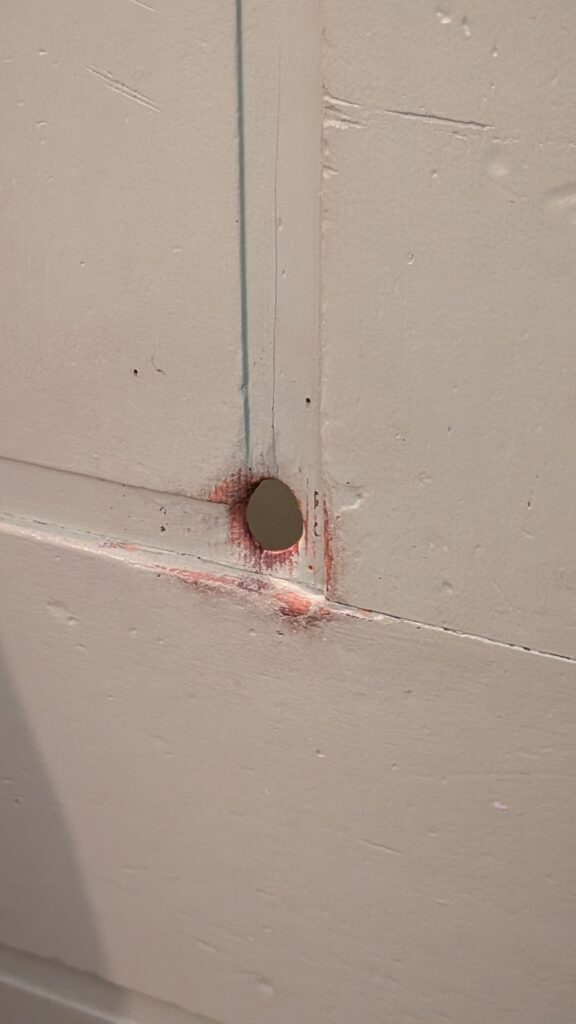
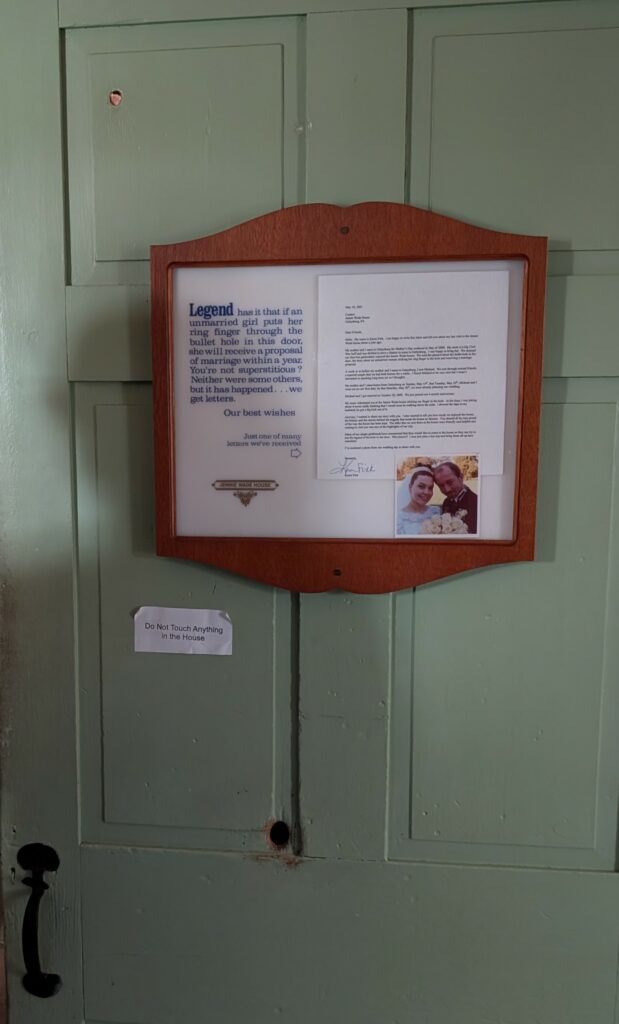
“This is the room Georgia was in with her baby. They brought the bed down from upstairs to make it easier for her during her last days of pregnancy. John had been home just a few weeks before the battle and did it for her At one point, a bullet hit the mantle, bouncing off of it and landing beside Georgia’s head.”
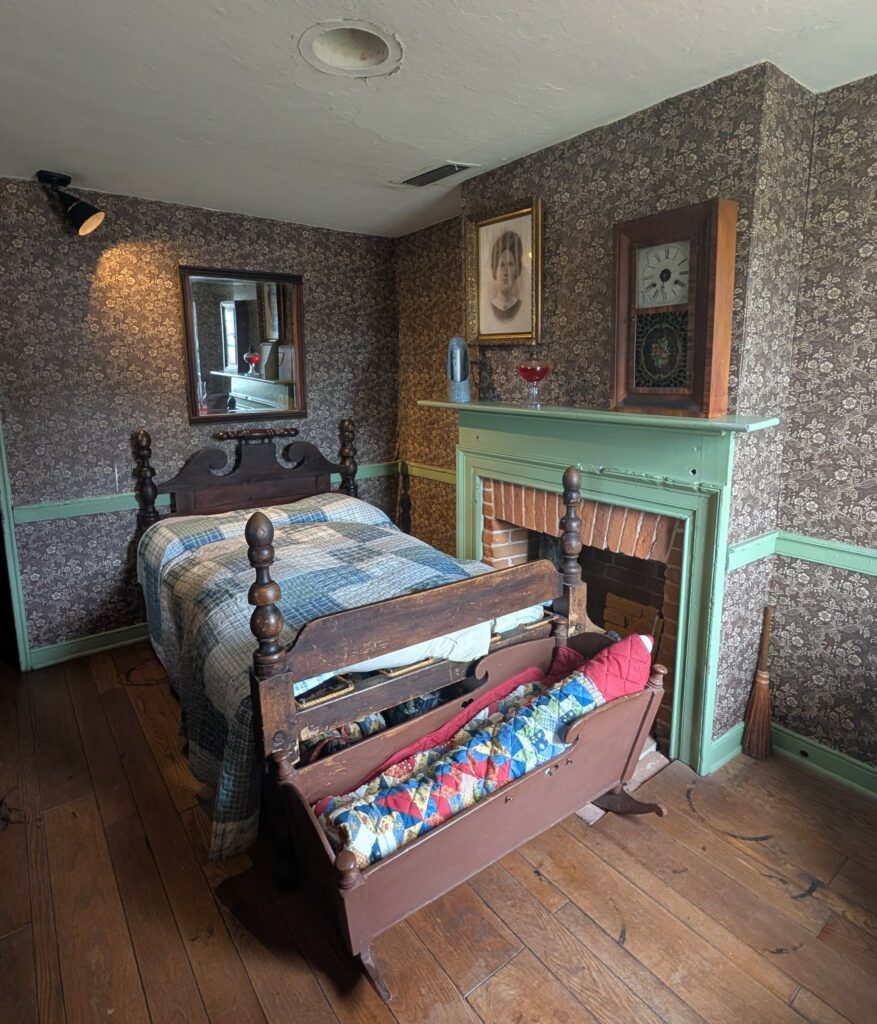
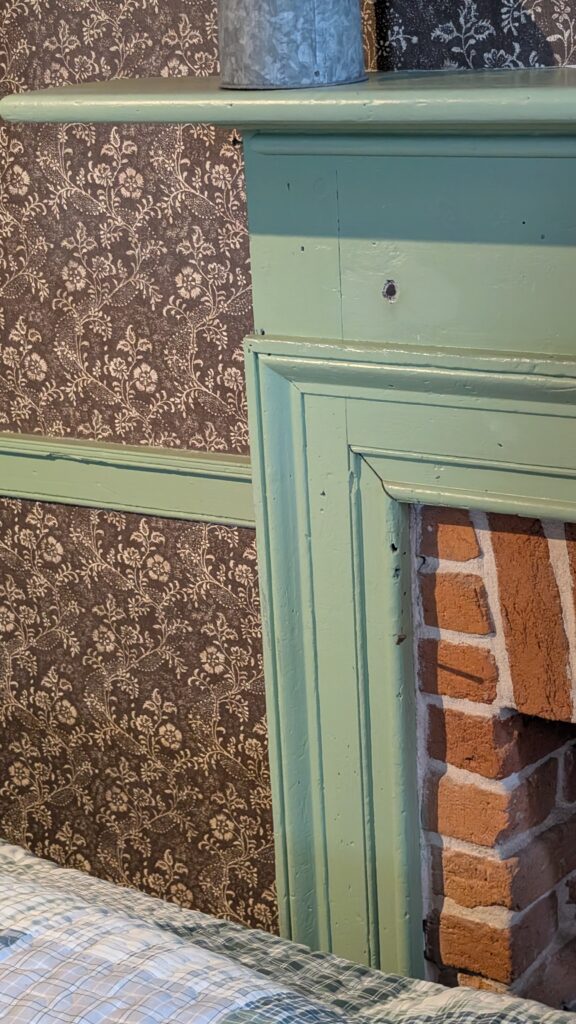
“On July 3rd, Jennie gets up with her little brother Harry and starts making bread. Then she enters Georgia’s room and begins reading Psalms The reading was about war and d,eath and Georgia asked her to please stop reading it, to which Jennie replied:
“If anyone dies around here today, I hope it’s me.”
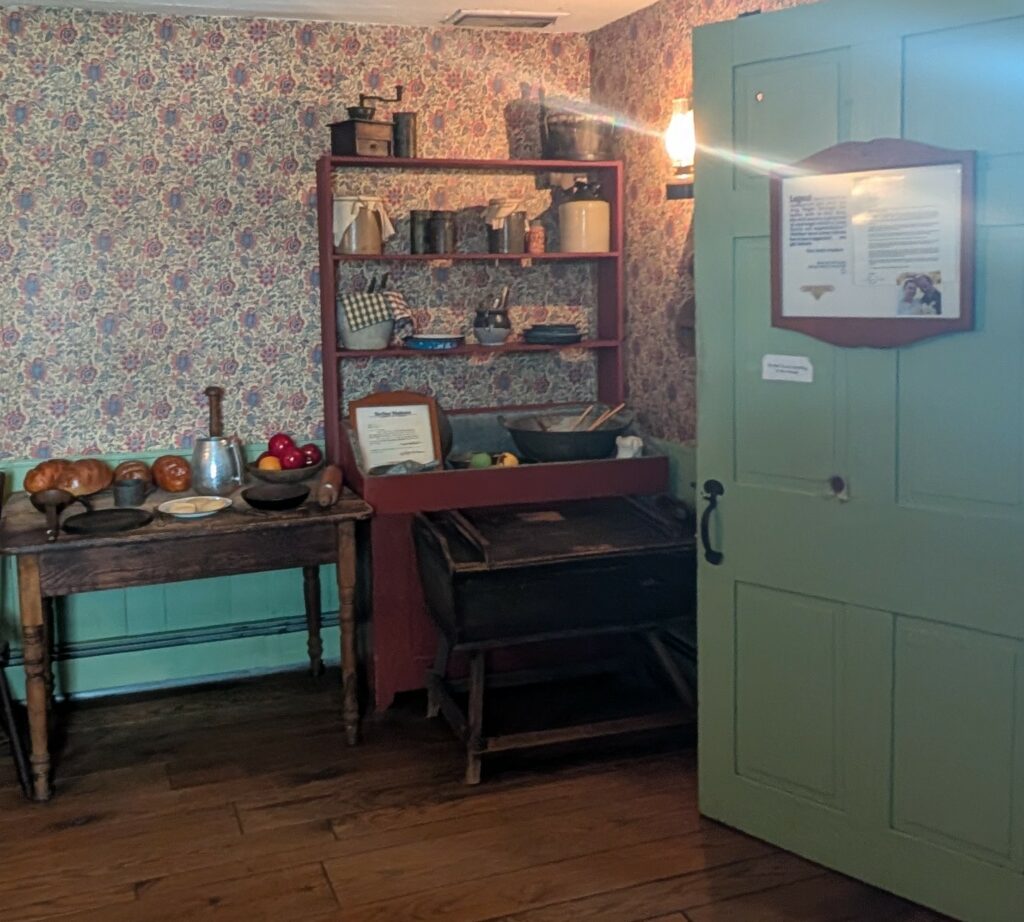
“Around 8:30 a.m., while preparing the dough, a 58 caliber bullet goes through the front door, then this door, hitting Jennie in the shoulder and directly to her heart, killing her instantly. She slumped over on the breadboard, and her mother ran into the next room and told Georgia, “Your sister’s dead.”
Legend has it that if a girl places her finger in the second bullet hole, she will get a marriage proposal within the next 18 months One man proposed to his bride, kneeling at the door and asking her to marry him during a tour. They planned to get married in Gettysburg as well.
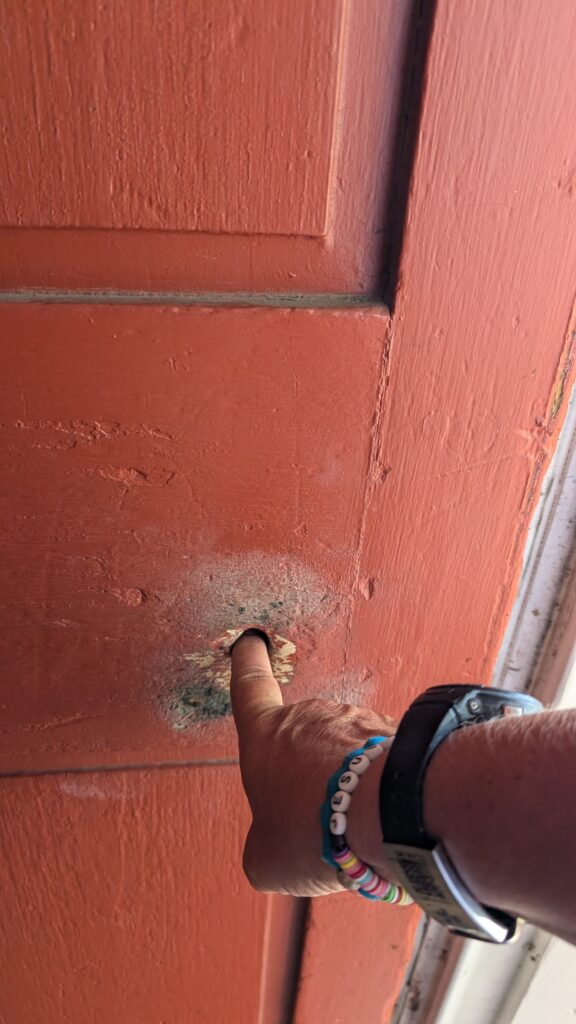
The original breadboard pictured below, as testified by Georgia, who provides the most information about the day of the tragedy.
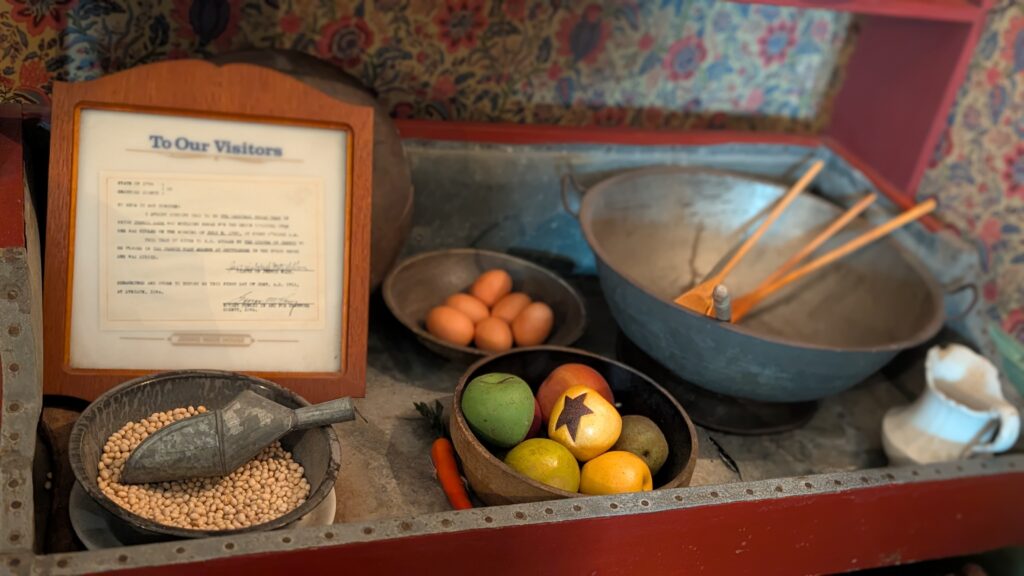
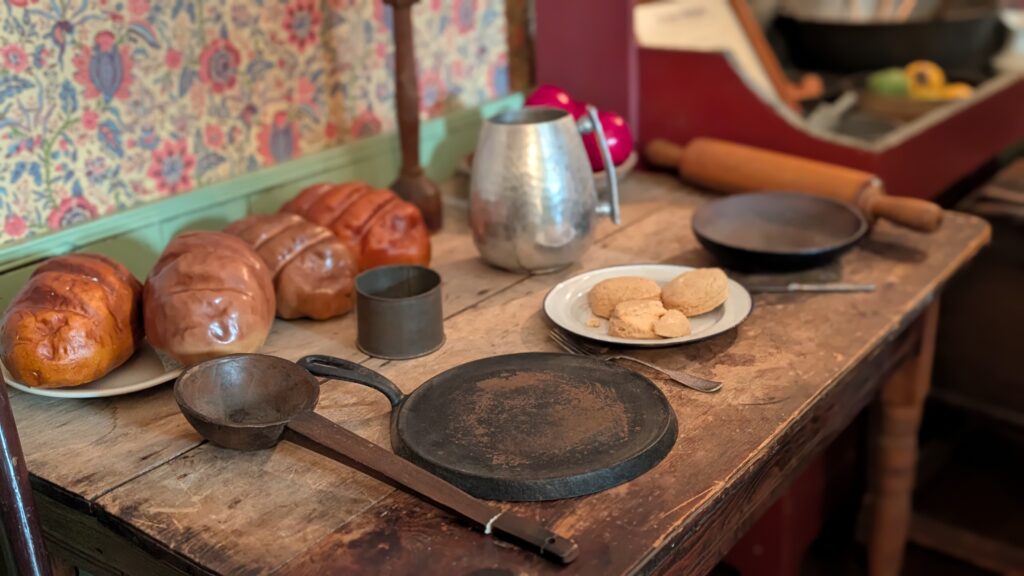
Union soldiers used the hole made by the Confederate artillery to get the family to safety. Using the butts of their rifles and feet, they kicked out bricks to get the family through to the other side, down the stairs, out the back door and into the basement.
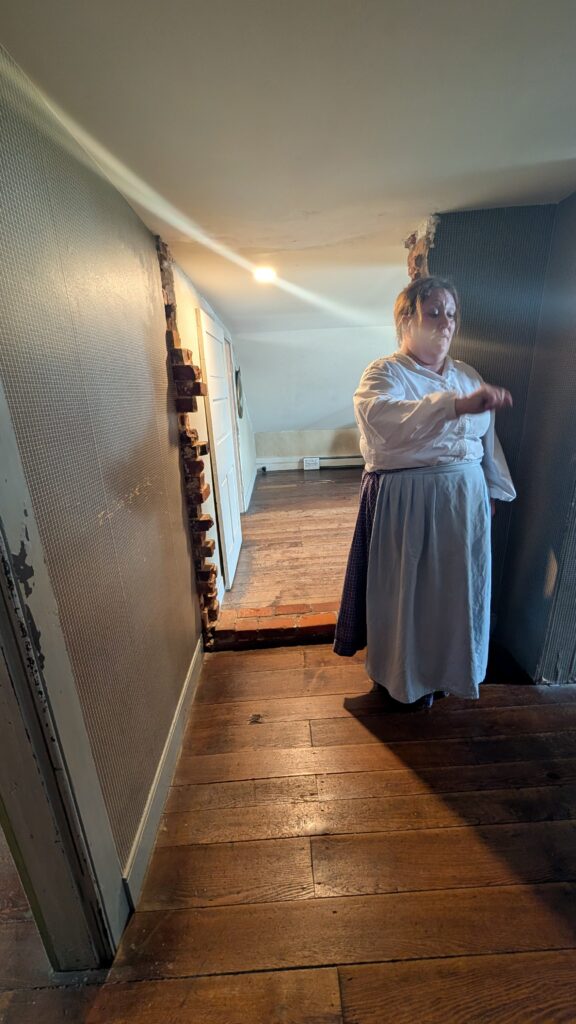
Jennie’s mom refused to go with out her daughter’s body, so the soldiers wrapped her in a quilt and carried her to the basement as well.
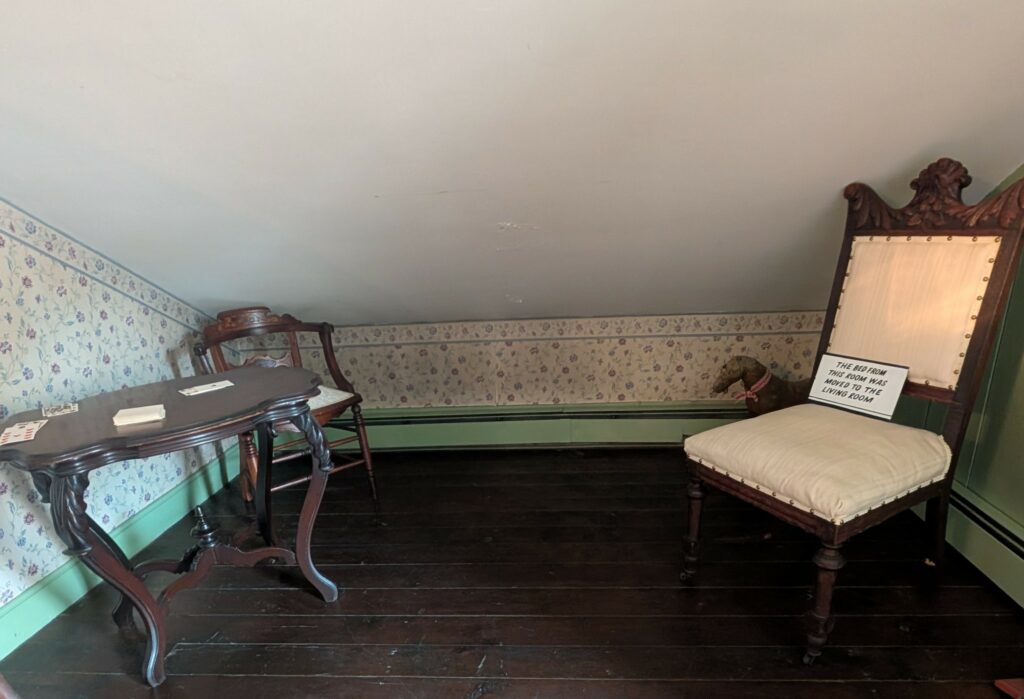
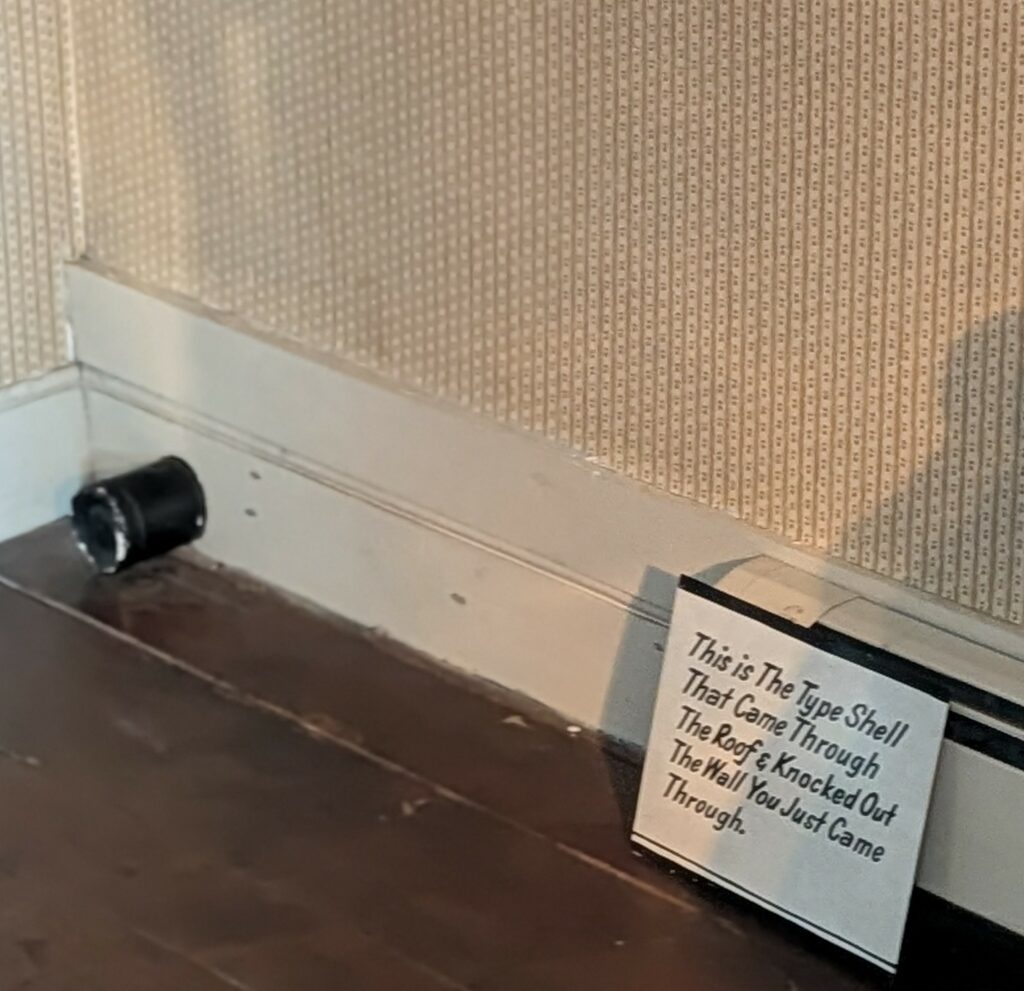
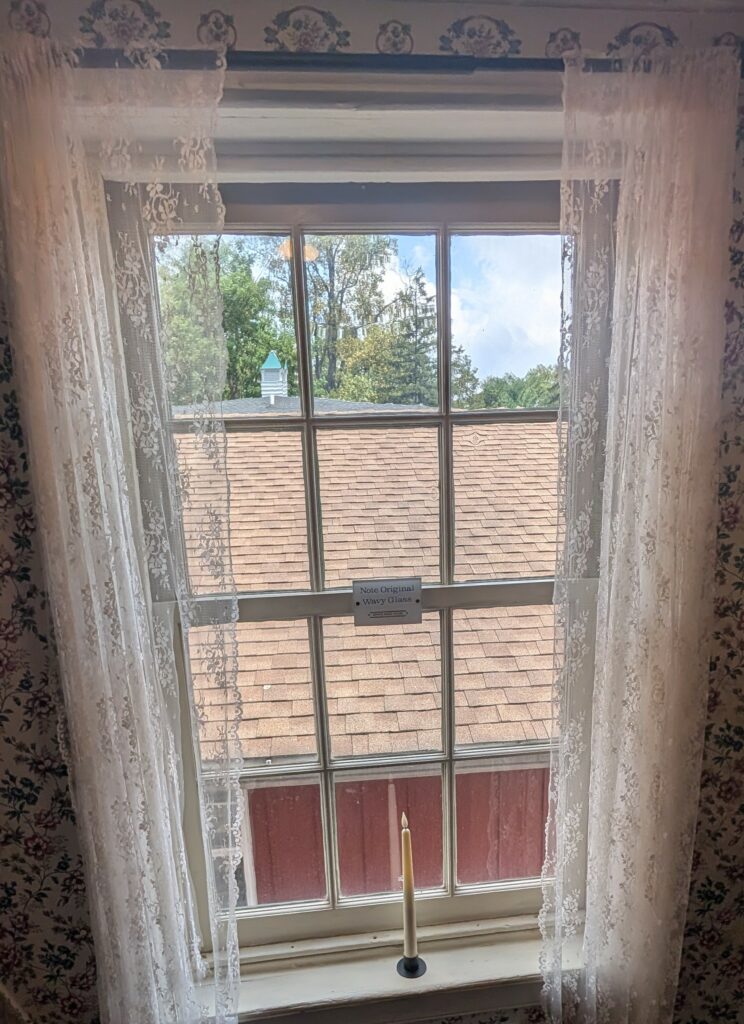
In the neighbor’s living room, the museum features a display of original artifacts from the battle. The clock on the mantle, set to 8:30 a.m., the time of Jenny’s death, has survived all these years. Inside the china cabinet, a shell that hit the house resides, along with letters and a board from the kitchen that has faint stains of Jenny’s blood on it.
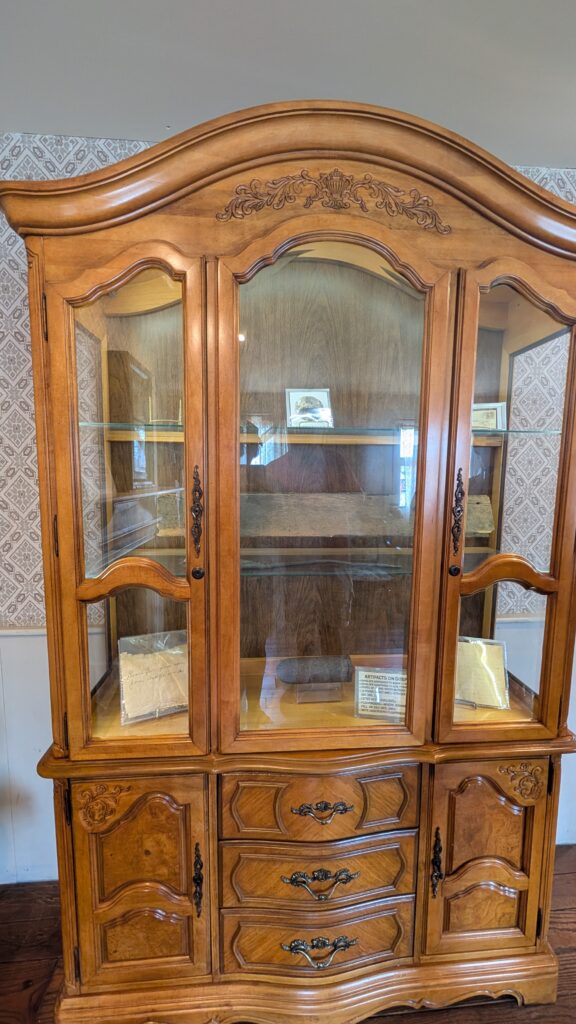
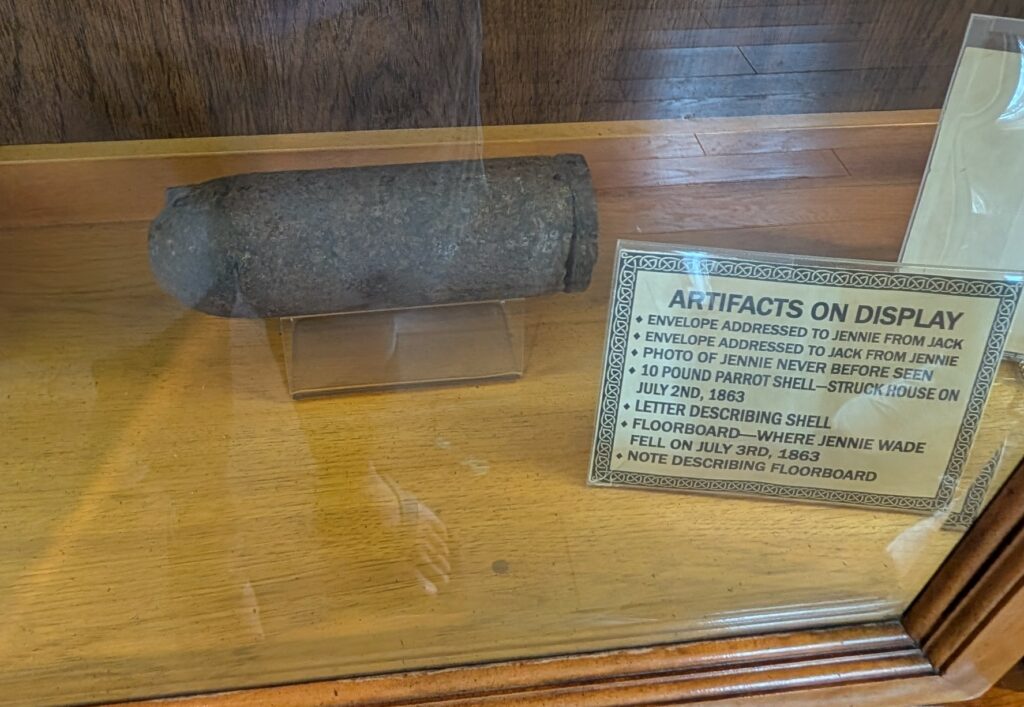
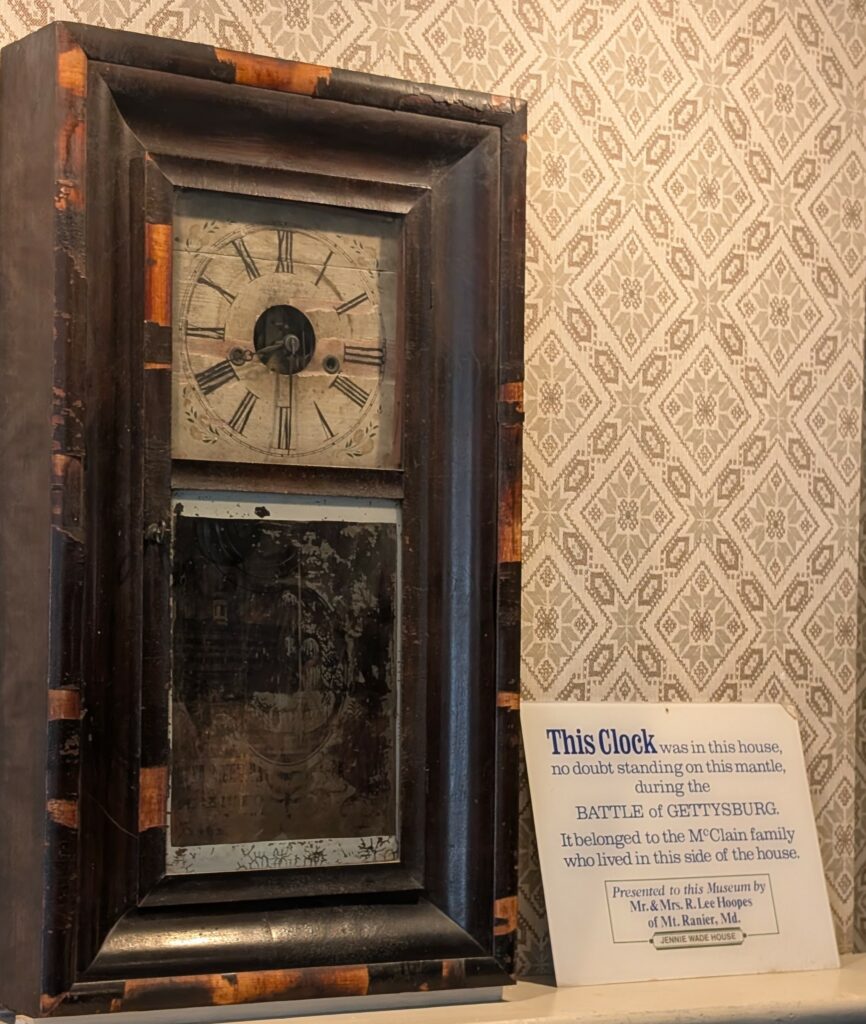
“Through a Mother’s Eyes” painting in the basement of Georgia, her baby, and brothers with the Union soldiers who helped them get there.
“If you notice, Jennie’s hand is white because she still has flour on it from baking bread After the fighting stopped, her mother went back into the kitchen and finished the bread Jennie was making She made 52 loaves for the Union soldiers.”
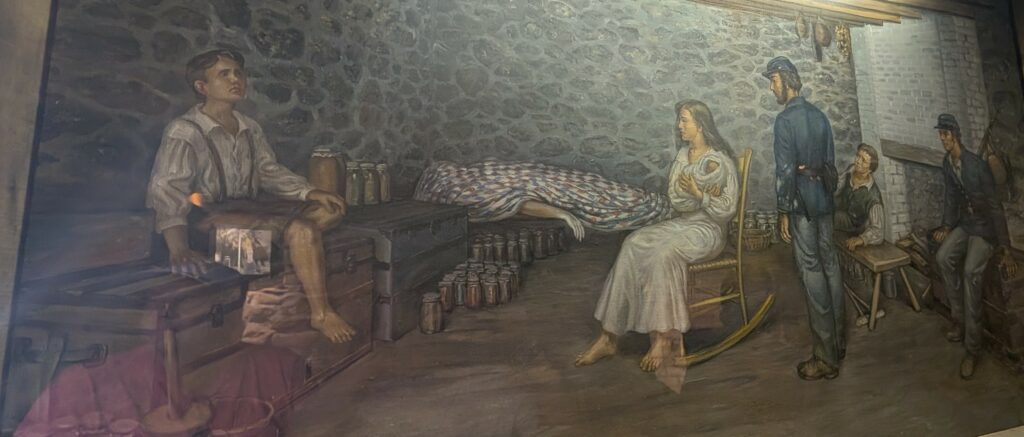
Once the family reached the basement, they stayed there for the next 18 hours until the battle ceased. Ironically, Jennie’s house, just a few blocks away, had very little damage. If she had stayed home, she probably would have lived.
“Why weren’t they in the basement in the first place We don’t know We assume it’s because Georgia had just given birth, it was a hard labor, and she wasn’t doing well But no one really knows.”
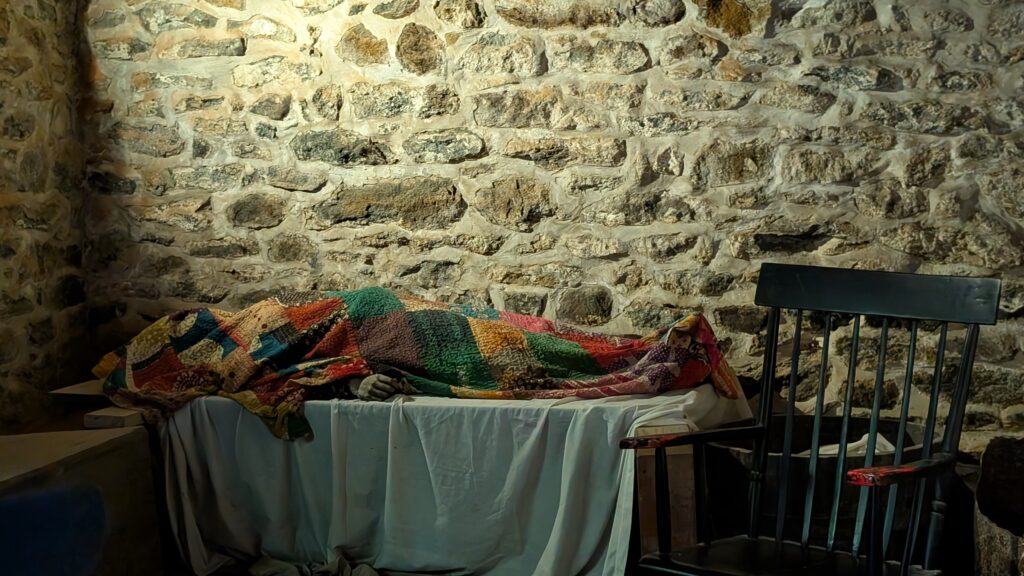
“Jennie was buried in a coffin, wrapped in the blanket they carried her through the house in. It was made for a Confederate officer, but for some reason, it wasn’t used. They buried in the backyard, which is where the store is now. Six months later, they moved her up the hill to the cemetery. Her grave stone is easy to find because of the flag. Georgia petitioned the government for it. She’s one of only two women who has a flag beside their grave. Do you know who the other one was?”
“Betsy Ross,” I quipped, a fact I had learned the day before on the battlefield tour.
Wrapping up the tour, our tired legs needed a rest We headed back to the campground for a quiet afternoon with the pups and finished watching Gettysburg, a movie that had much more impact watching it just a few miles from where the actual battle took place.
On the way back from touring downtown Gettysburg, I noticed the sign in front of Black Horse Tavern marking it as a war hospital. We traveled along led Black Horse Road often while visiting Gettysburg, but I hadn’t noticed the memorial until now.
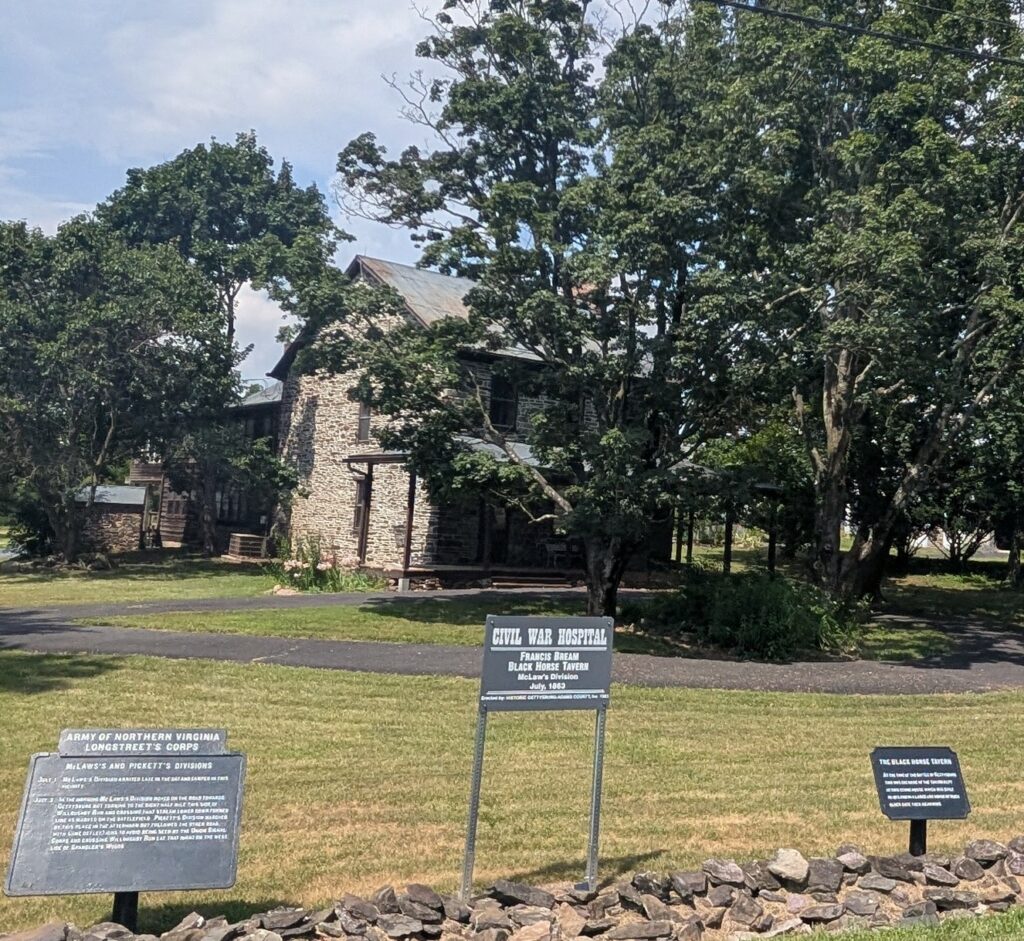
Sunday morning I awoke right at 5:00, the time Ron wanted to get up and start the process of heading home He slept a few minutes longer while I took care of the pups and spent time with the Lord. Rocco and Ruby waited anxiously for his awakening.

“6:47, a little ahead of schedule,” Ron said when I climbed in the truck after videoing the Atlas’s exit from site 113. Another anniversary trip coming to an end, praying for many more in the years ahead.
Our route home took us once more through the battlefield. Throughout the entire weekend, I tried taking a picture of the Confederate Avenue sign, but didn’t for one reason or another. God blessed me with the best shot of all as we left, sunrise over the battlefield.
